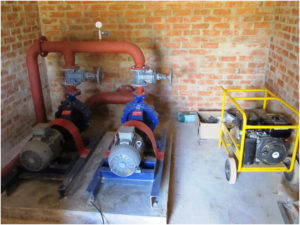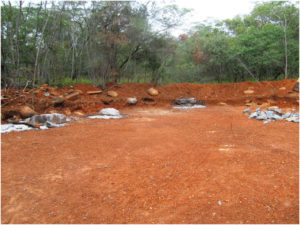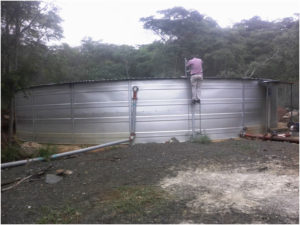Tank Stands
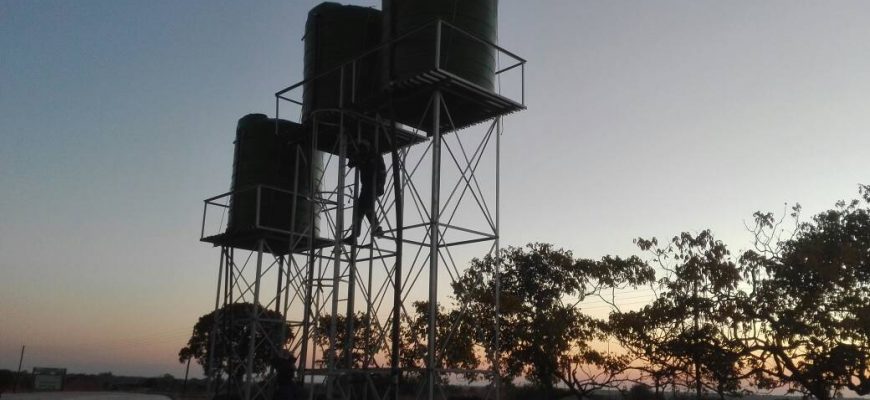
Chigwere 6m tank stands for drinking water to school, shops, clinic, and growth point at Chigwere village near Chegutu. Customer Welthungerhilfe.
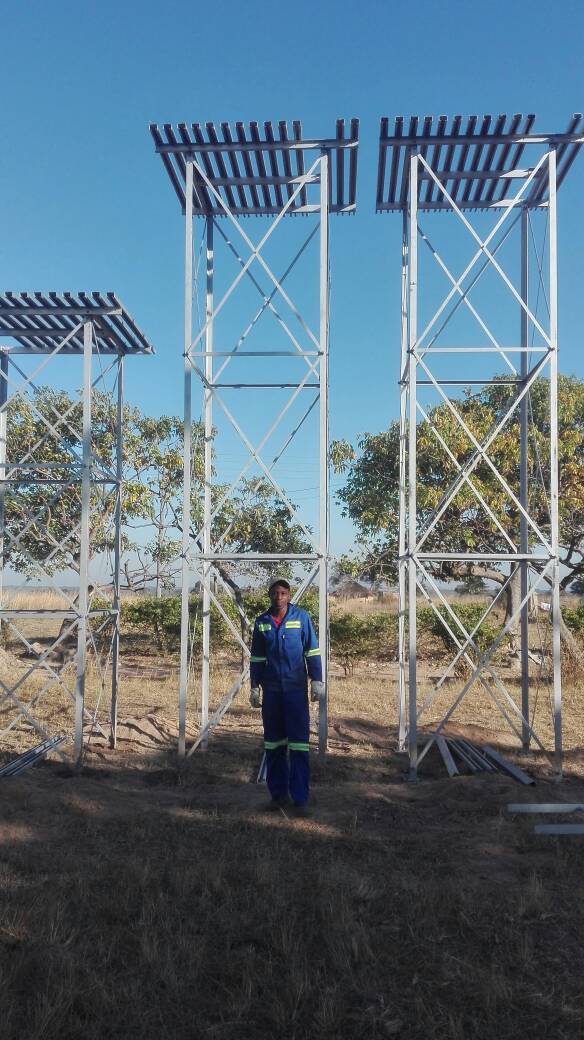
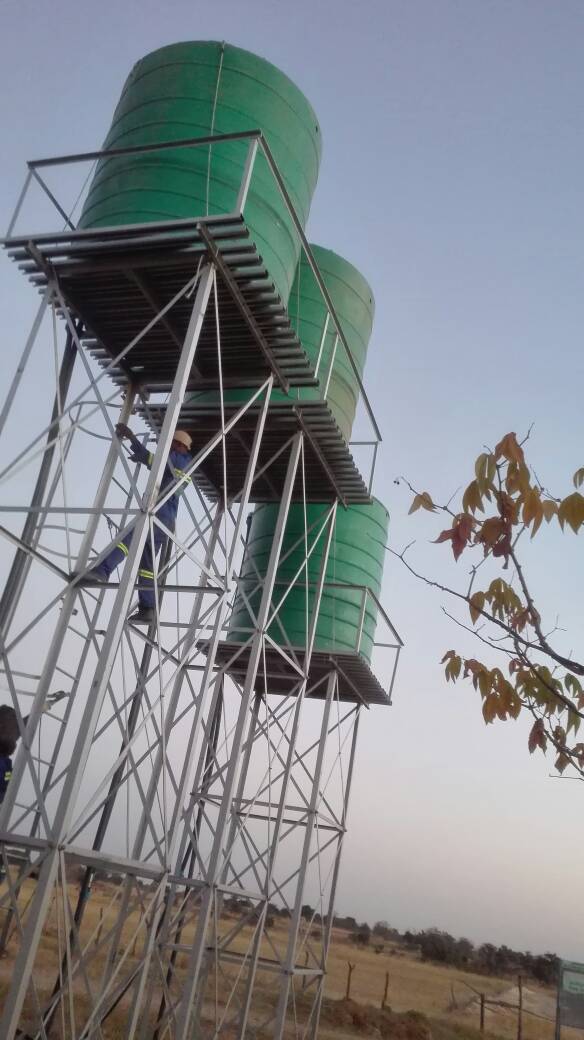
Valley Centre Pivots, Kezi
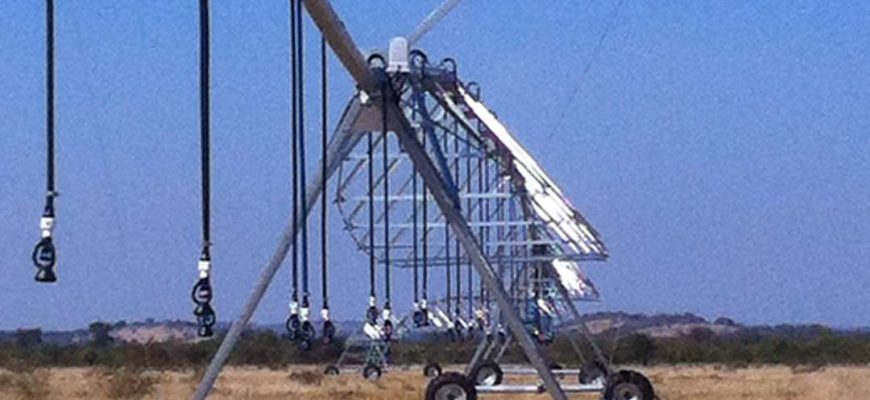
Kezi 60 hectre centre pivots for Valley irrigation scheme
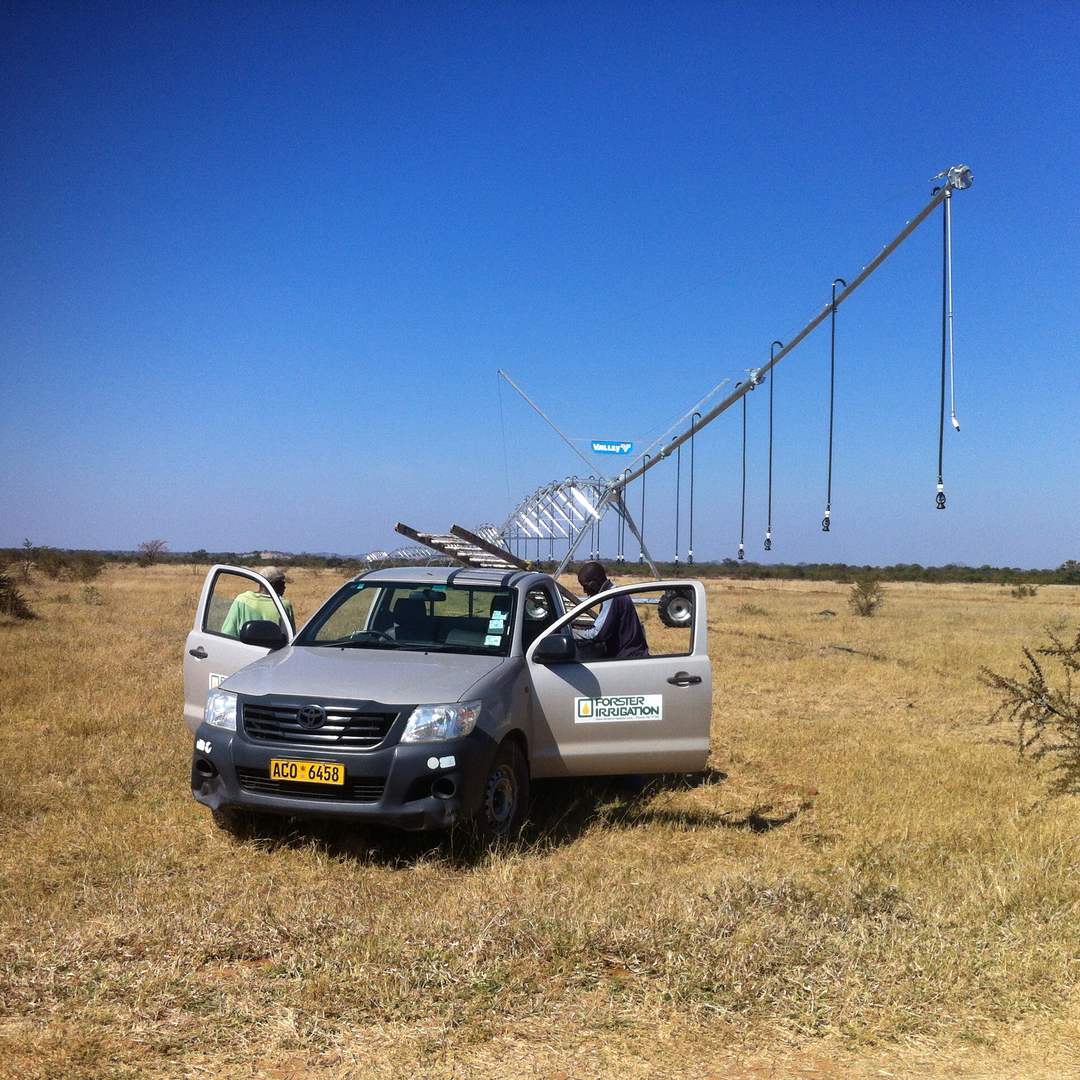
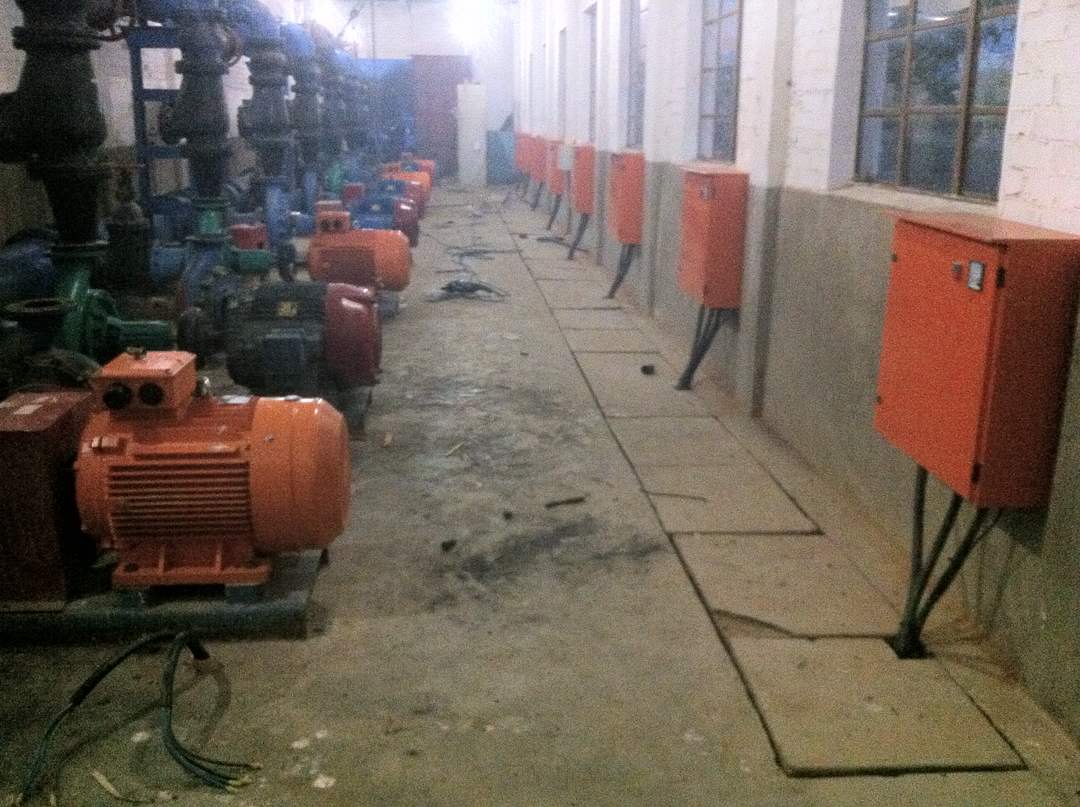
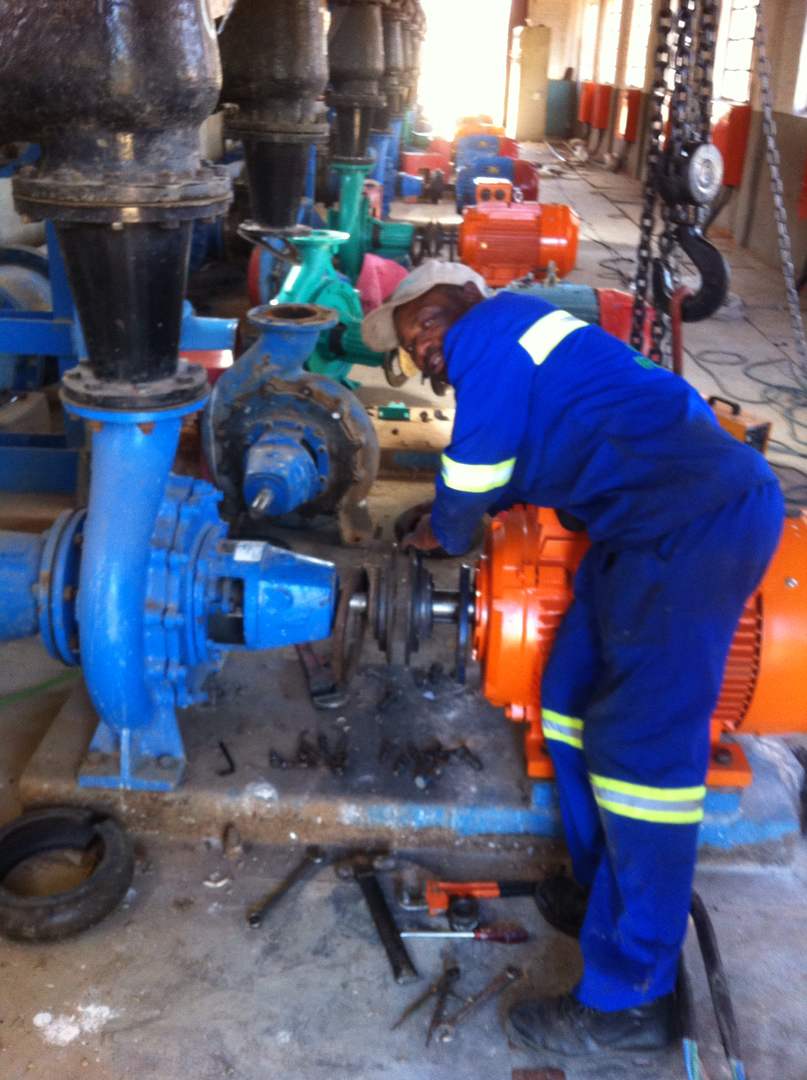
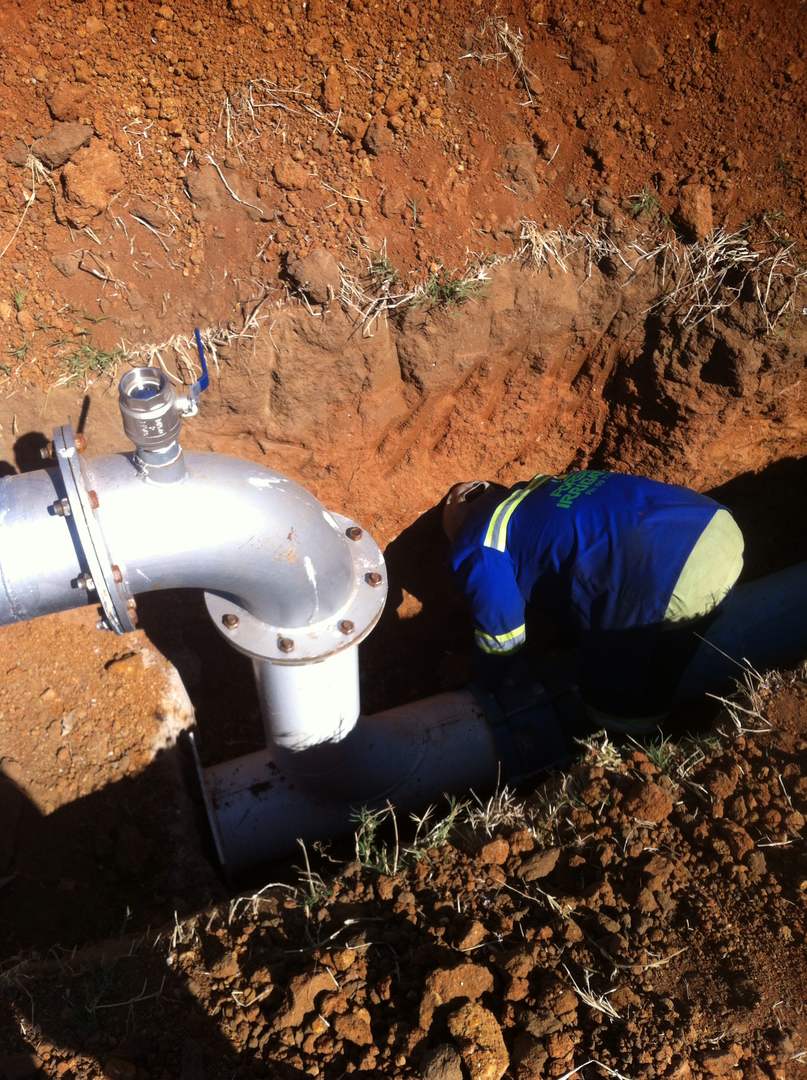
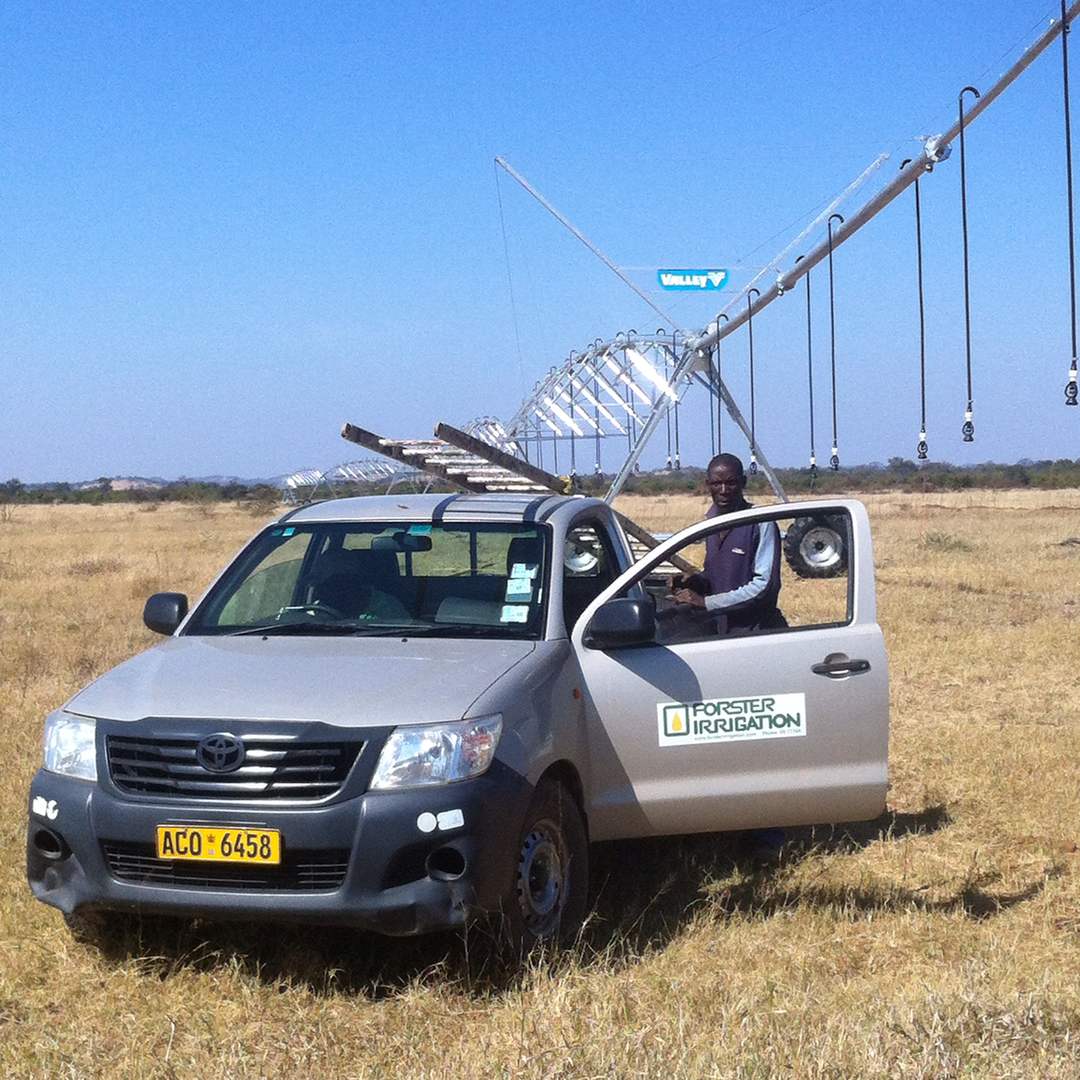
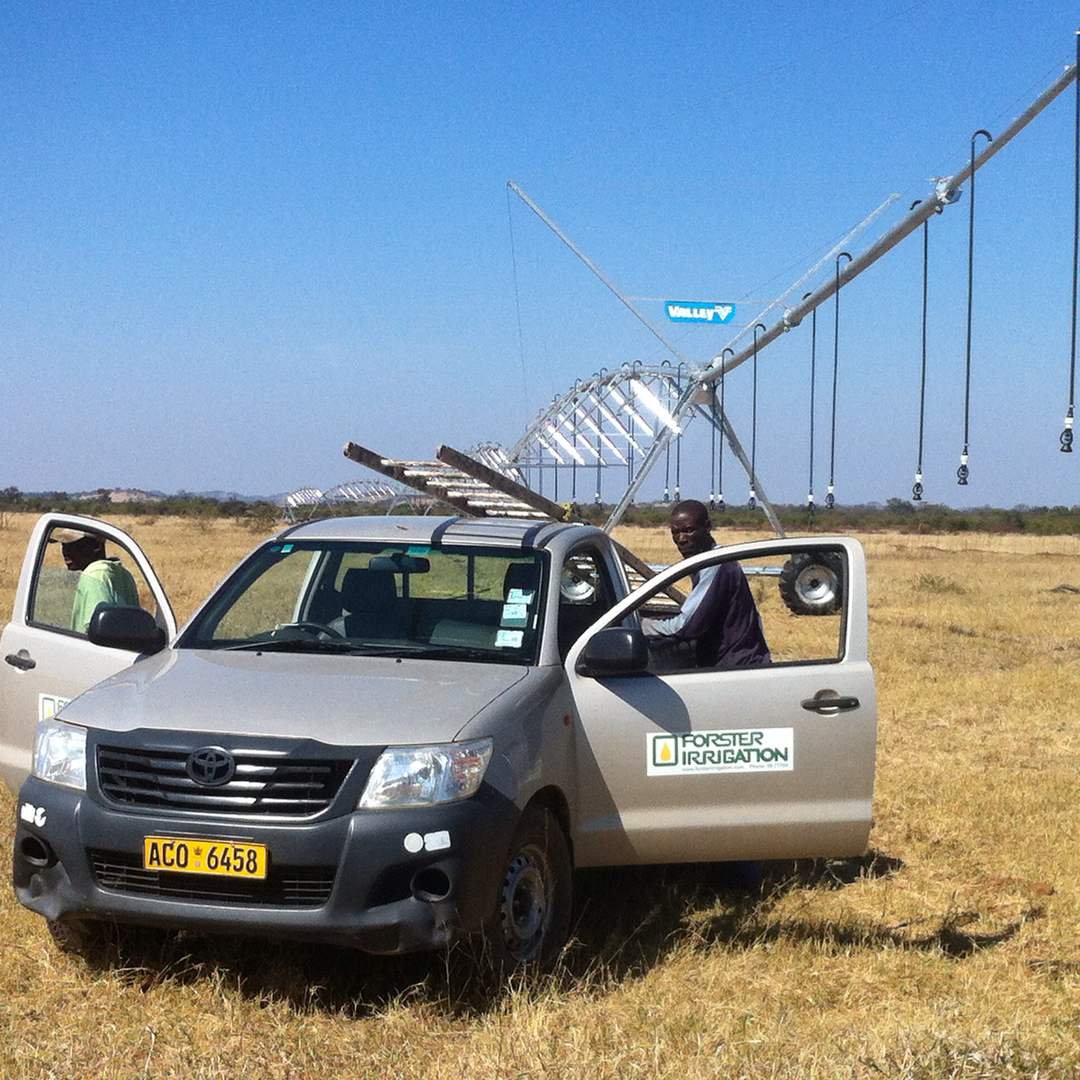
Mary Ellen Farm Turk Mine
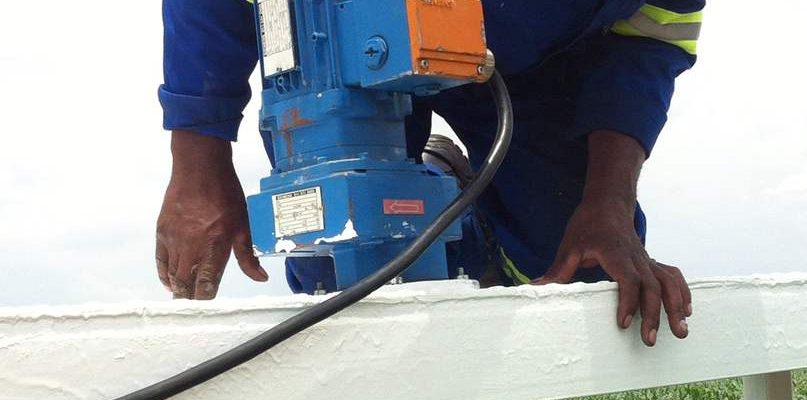
Center pivots scheme plus pump and fertigation tanks for Mary Ellen farm in Turk Mine.
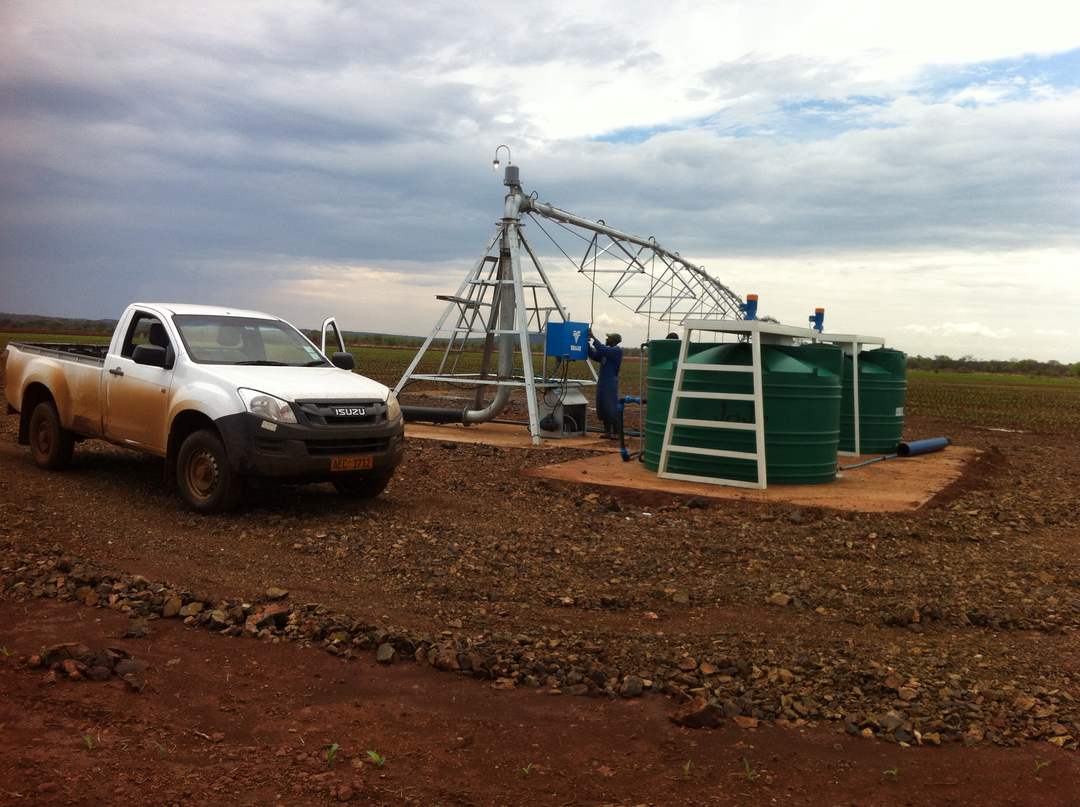
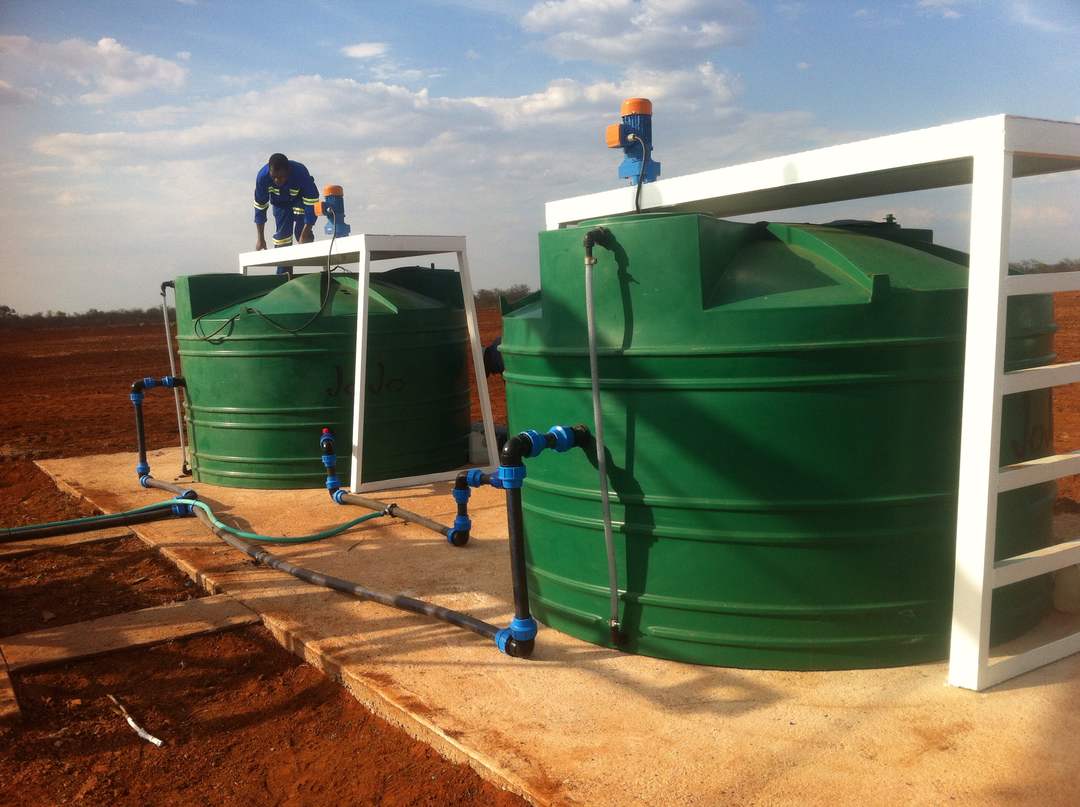
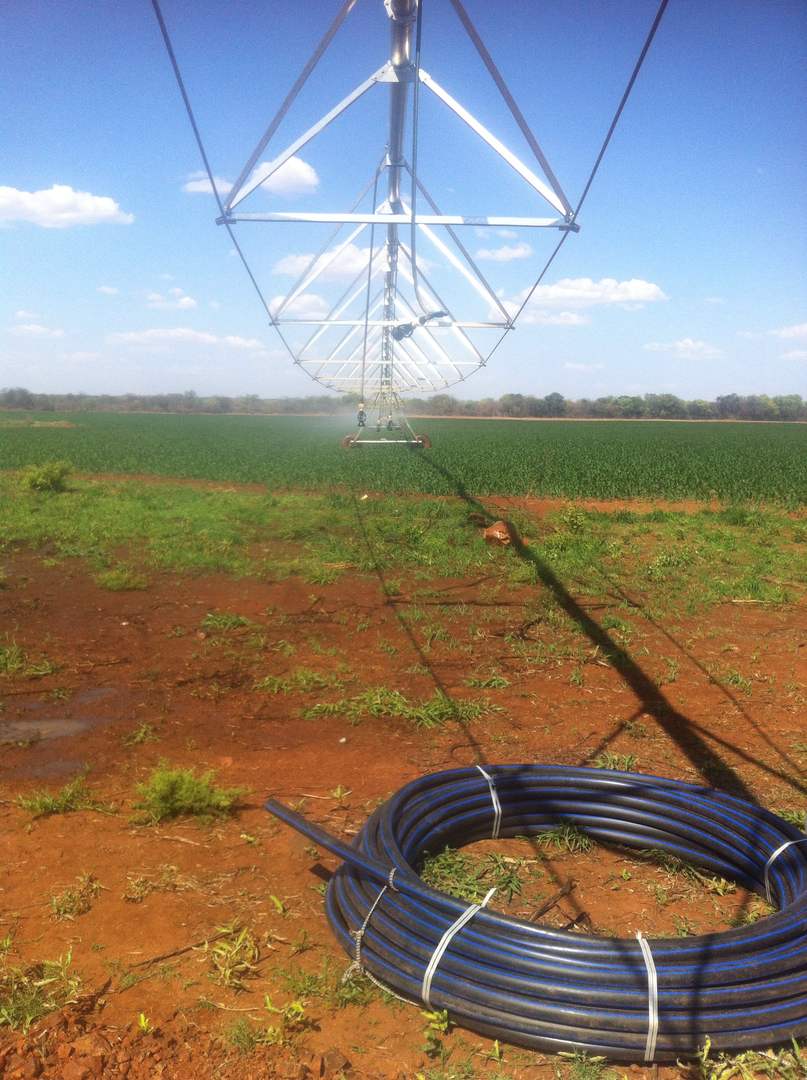
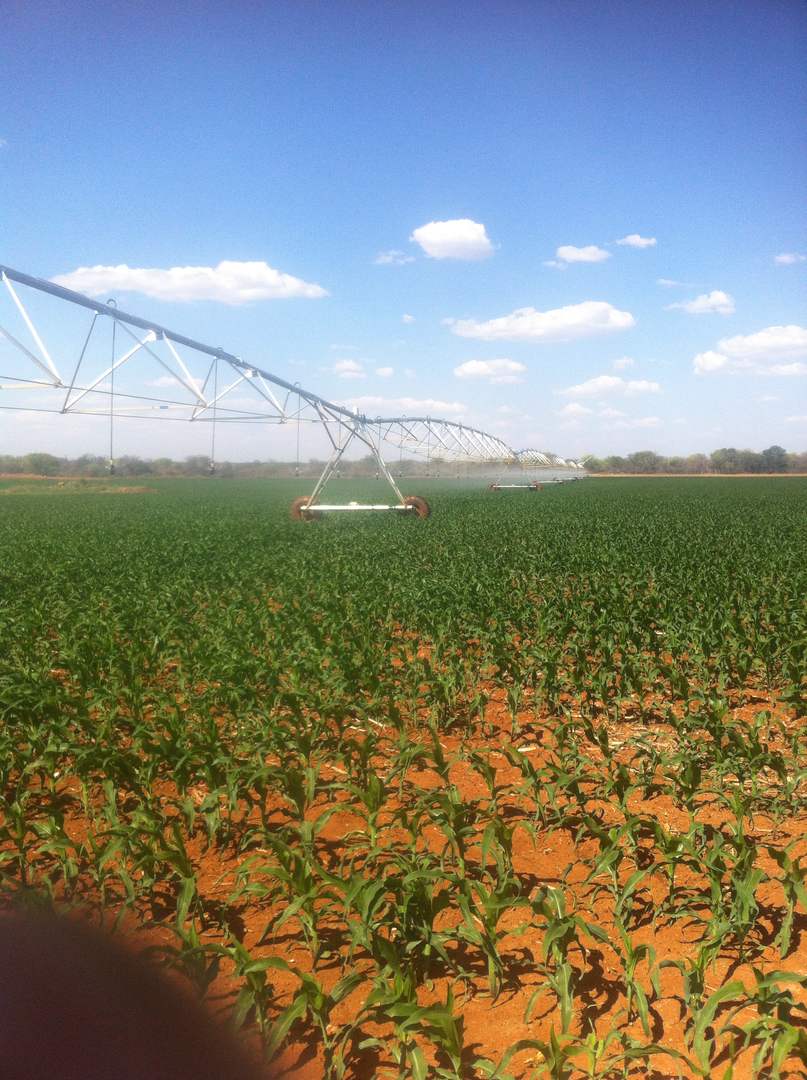
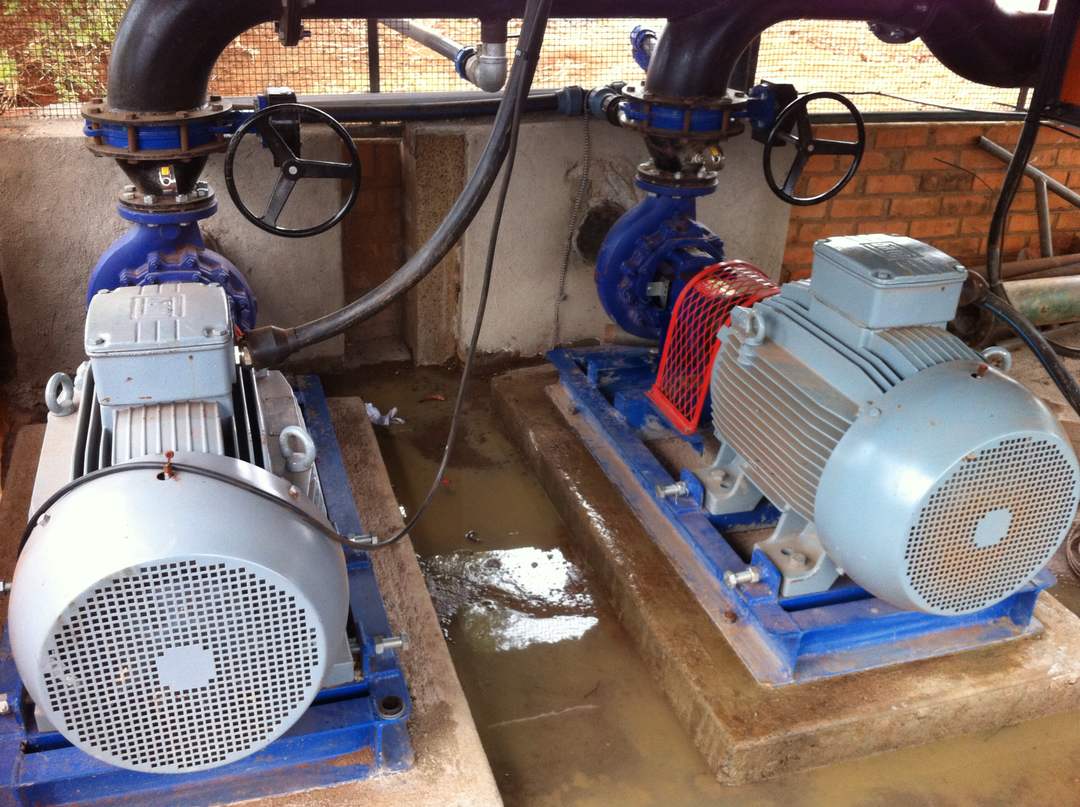
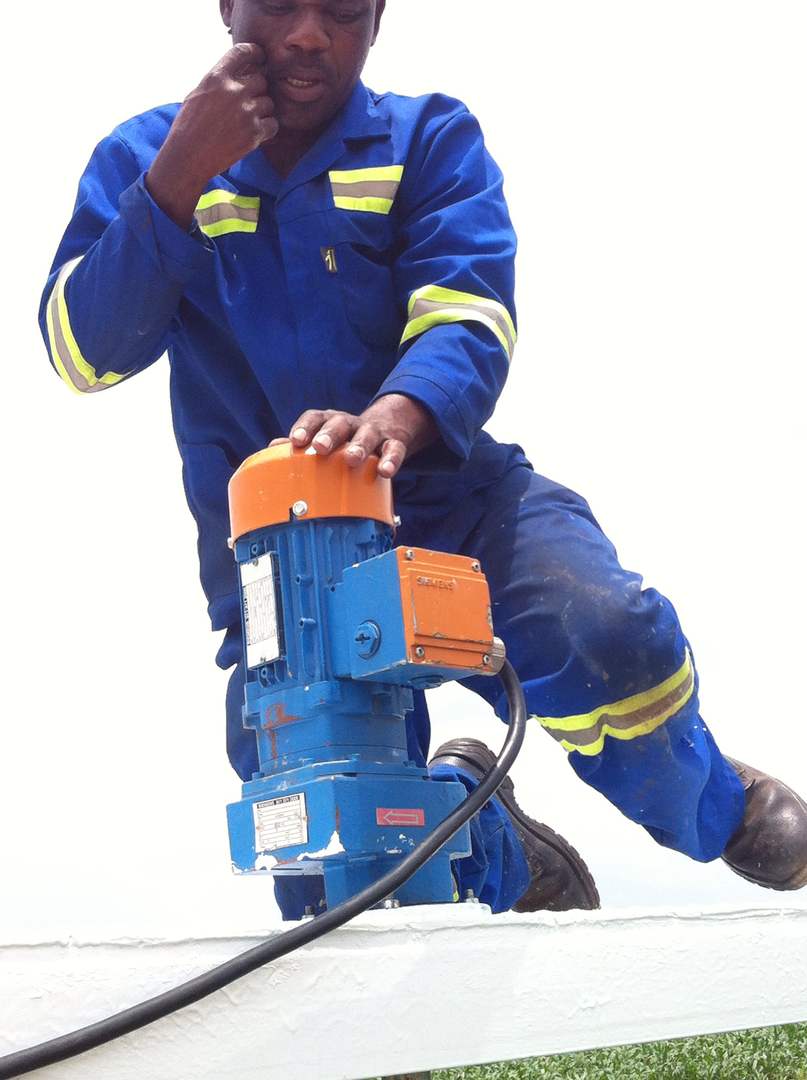
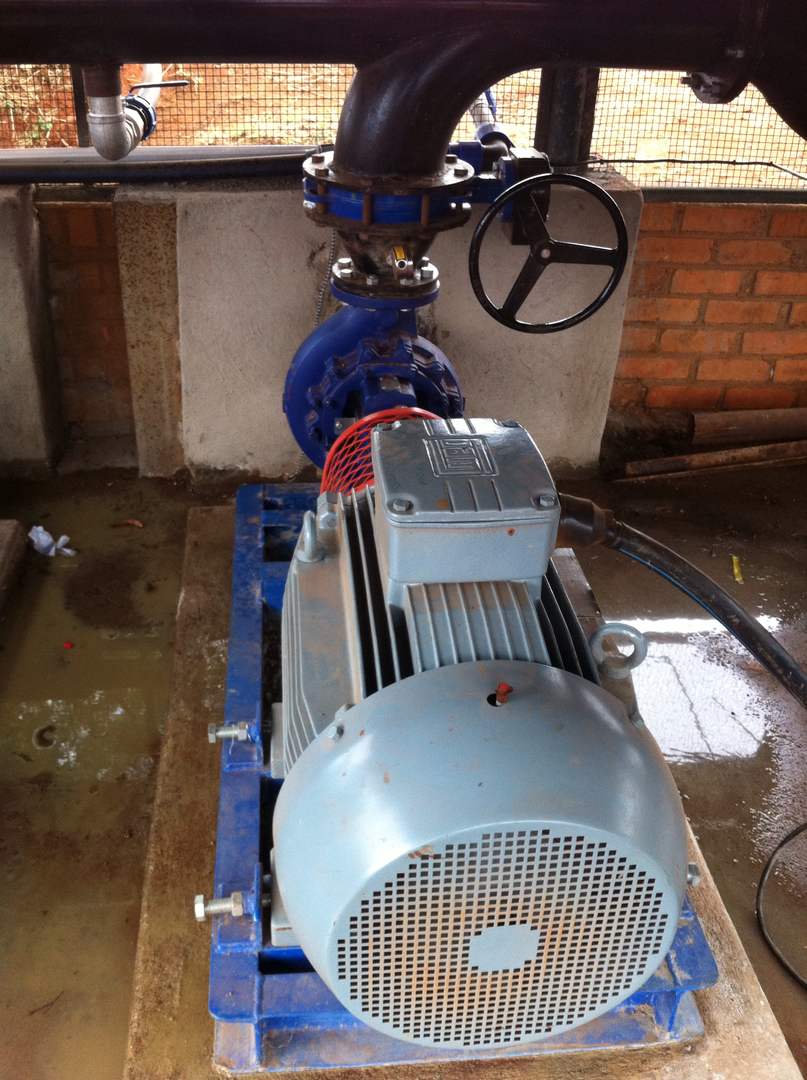
Kufandada Solar Irrigation
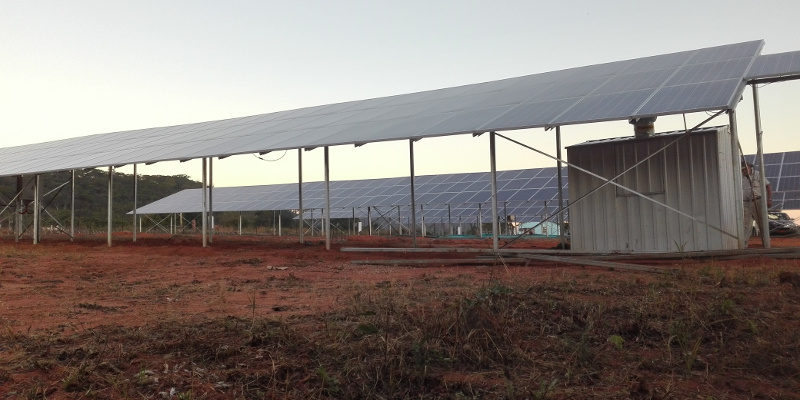
Forster Irrigation was awarded a contract to install a 102kW (399 no x 255W panels) solar array to provide power to a 63kW 380V pump. The solar pump was positioned in a false borehole behind a weir on the Rovza river in Bikita District. The pump has a maximum flow of 250m3/h to a 70m head and is recorded to have an average daily flow of 1 650m3.
It supplies water into 3 different drag line sprinkler irrigation fields each around 8ha to make a total of 24ha. Once the sprinklers are pressurized fully the water then travels up to a 1,000m3 storage reservoir. As the pump slows down in the evening the gravity feed from the reservoir takes over so that there is a stable pressure into the sprinklers. That way, irrigation can be done over 14+ hours and not only the 9 hours that the solar pump will be operating. Forster Irrigation designed the solar array and selected the pump and installed the reservoir and irrigation distribution network as well as providing solar power to a nearby hospital.
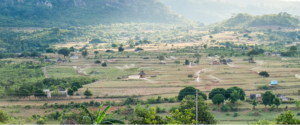
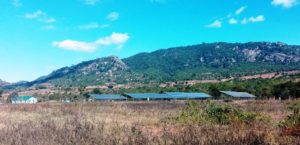
Hwange National Park Solar Powered Game Water Supply Project
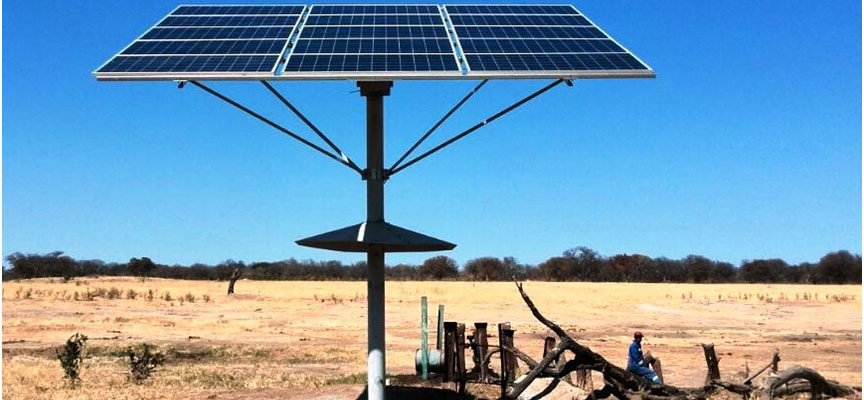
Hwange National Park does not have many natural sources of surface water and hence to keep the animal population alive water has to be pumped from manmade boreholes. For many years this has relied on diesel pumps which are expensive to run and break down often. To negate this a consortium of trusts have given Forster Irrigation the job of converting the pumps onto solar powered units. This is an ongoing project but so far over 30 units have been installed with an average daily flow of 45 000litres a day. It is estimated that by 2017 there will be no need for diesel engines in the park, at one stage weekly consumption of diesel was in excess of 5 000litres! It is estimated that there are between 20 000 – 30 000 elephants in the park.
These pumps have been installed with the Hybrid function so that at night if needed a generator can be run although this is only to be used if there has been downtime.
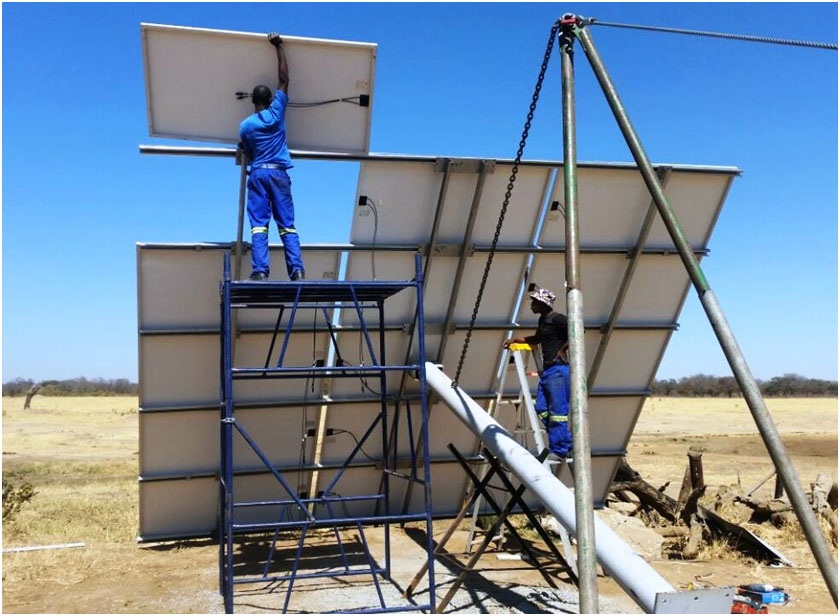
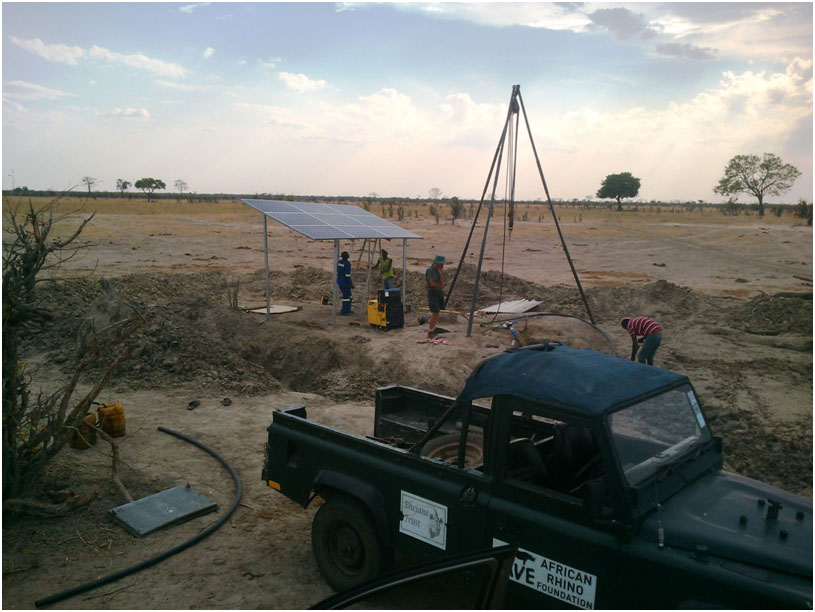
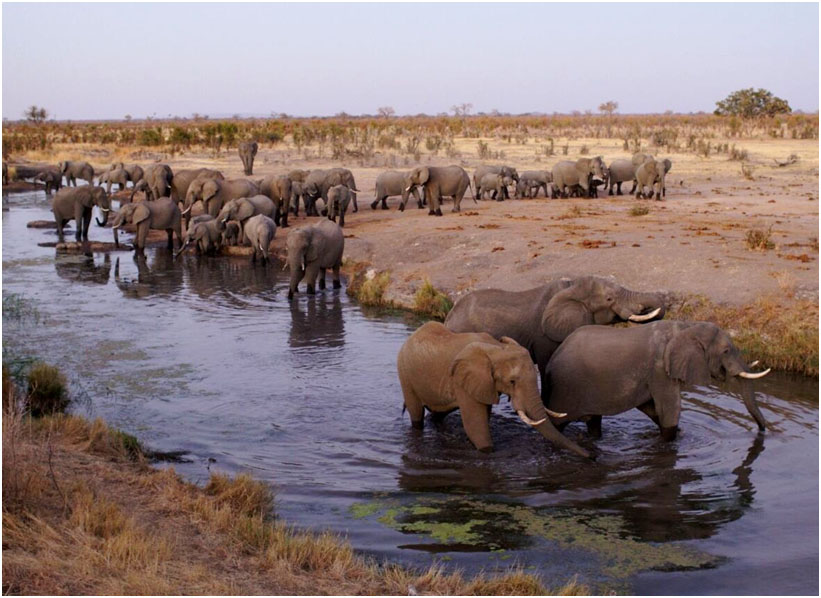
FAO Nkayi & Lupane Solar Water Supply Project
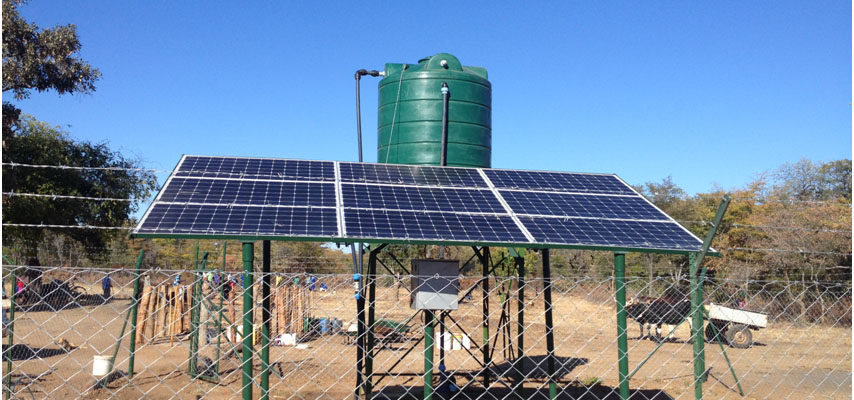
This project involved the installation of 30 solar powered water points throughout Lupane and Nkayi districts. Each water point had a solar pump, tank on a metal stand, drinking water taps with concrete apron and soak away, cast concrete livestock drinking trough, fodder irrigation plot and a pipe leading to the nearby dip tank. Each point is servicing on average 250 people (7 500 in total) and in excess of 500 cattle drinking daily so is providing water for 15 000 head. The area covered is 100km x 170km so 17000km2 which proved to be a logistical challenge as many roads had to be made ourselves to get to some of the points. The scheme was meant to be a pilot project and already due to its success is likely to be introduced throughout Southern Africa. Each system delivers a minimum of 25 000 litres a day depending on the borehole yield. The cast concrete drinking troughs have a lifespan in excess of 20 years but are difficult to build as they require 6 tonnes of building material.
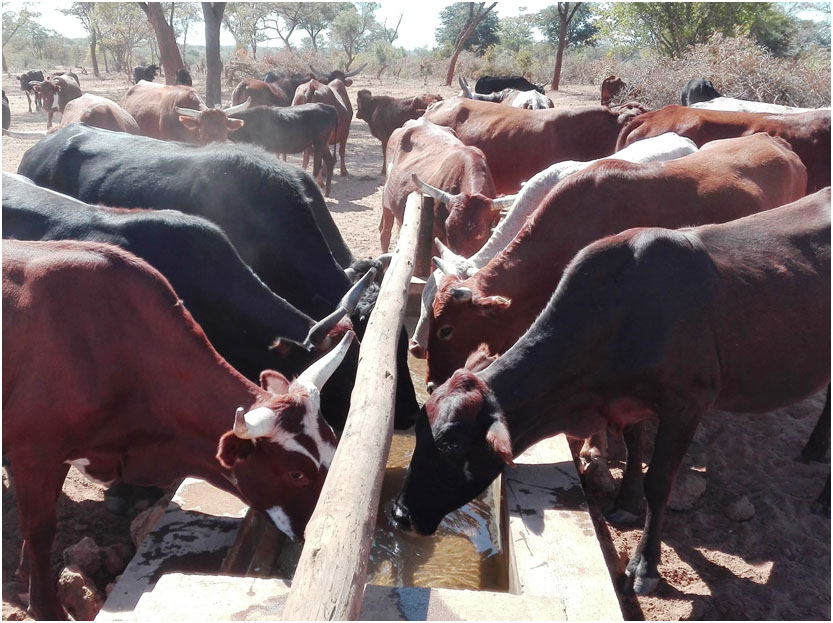
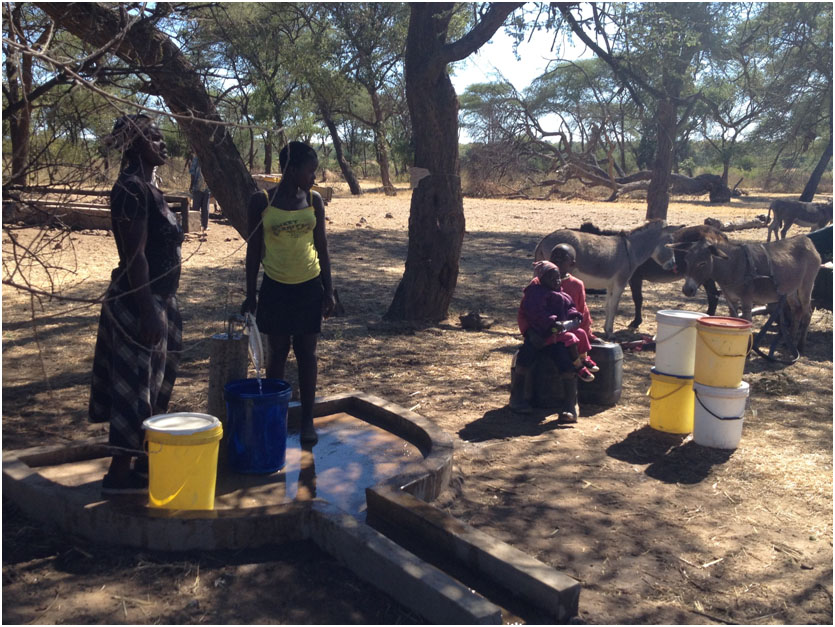
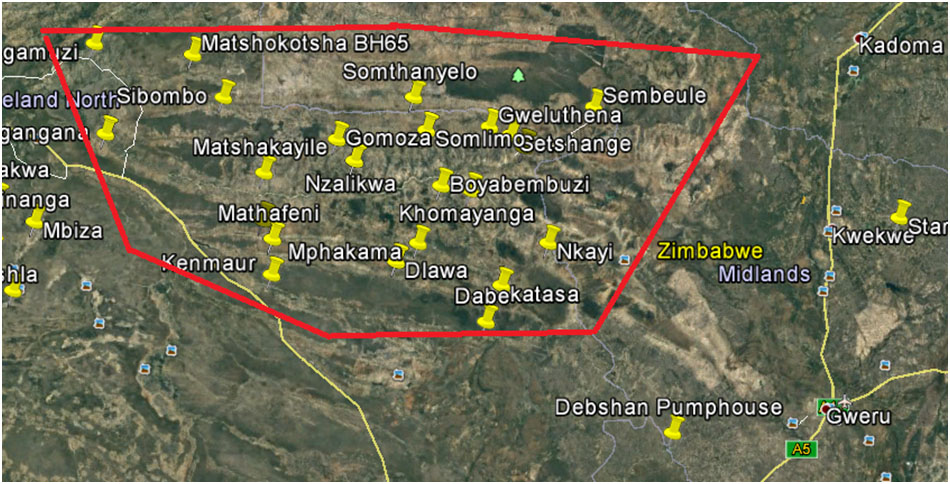
Plan International Umguza District Solar Powered Sand Abstraction
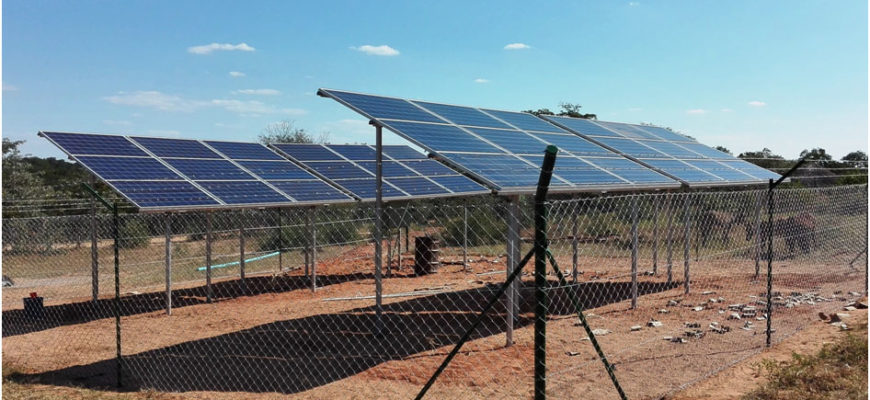
This project involved the complete design, supply and installation of the project. we selected a point on the river where there was a long stretch of deep sand after conducting probe tests along 7km of the river. We then fitted a 3.5m deep sand borehole and equipped it with a 5.5kW motor and a 15m3/h to 100m head pump. We put a 9kW array of 36 x 255W panels located 200m away at a village. We then laid a 9km 90mm pipeline which was dug by the community in 10 days. At the highest surrounding point we installed a 92m3 tank which then gravitates to 4 different tank points located 2.5km away from each other. The project from start to finish took 3 weeks.
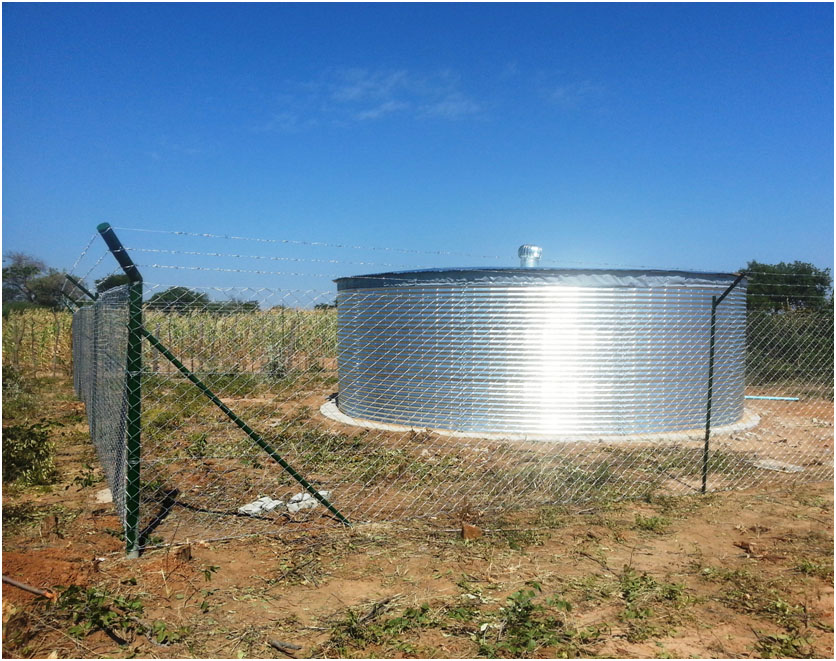
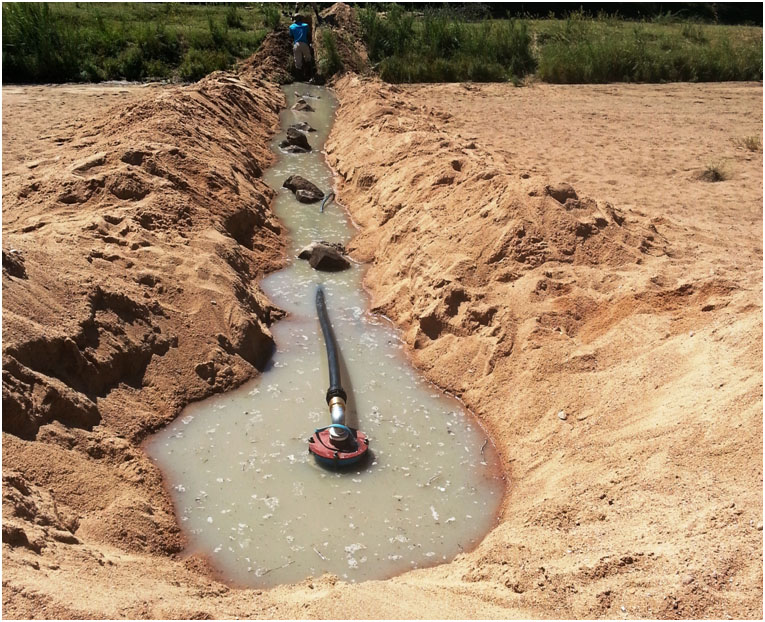
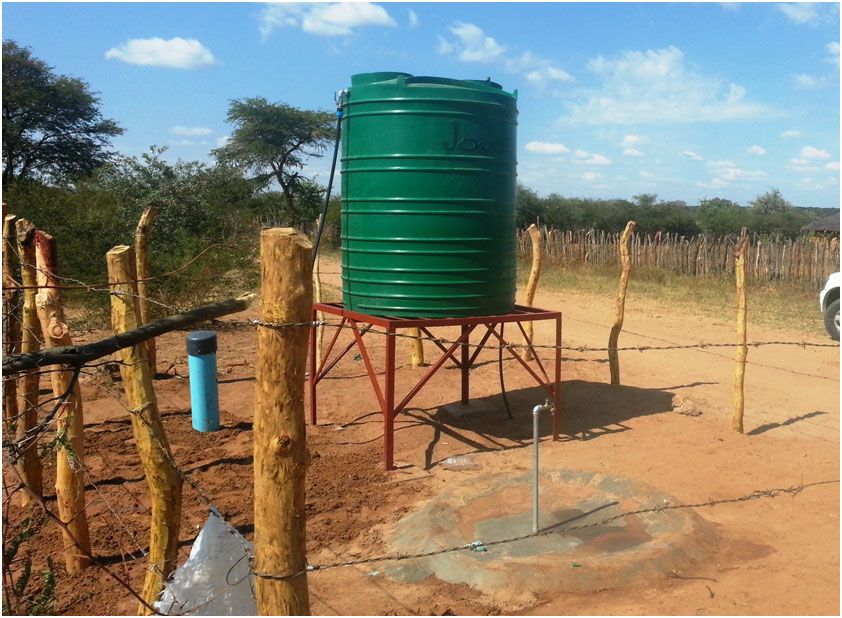
CRIDF Ntalale Solar Powered Sand Abstraction Drinking Water Supply
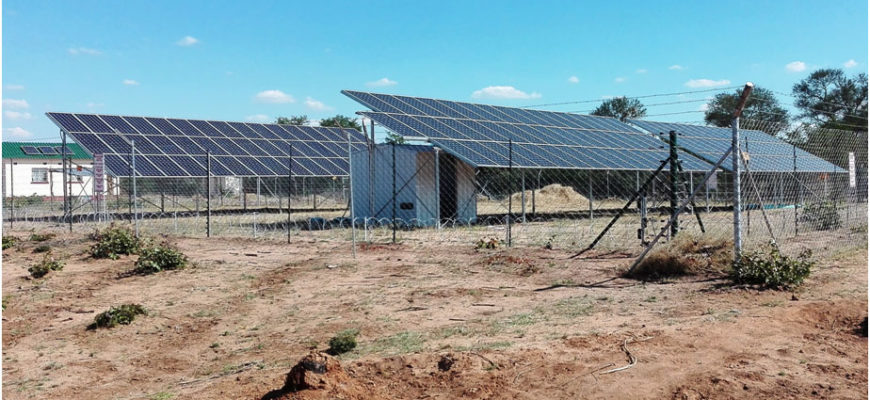
This Project involved the probing of the Tuli River to find adequate conditions for 3 sand boreholes, these were then developed with our own in-house technique of drilling in sand to a depth of 8 meters. The holes were yield tested to 50 000litres an hour each with no sign of excessive draw down or aquifer draining. The holes were equipped with 21 stage submersible pumps capable of doing 30m3/h to 110m head using 18.5kW on a duty standby operation. The pumps are powered by a 29kW solar array (144no of 200W panels) located above the 100 year flood mark nearby. The pump attendants house was also powered by solar for this project. The water extracted was potable and there was no need to treat the water. The pumps pushed water into a 125mm pipeline 7km to an existing reservoir and pipe distribution network.
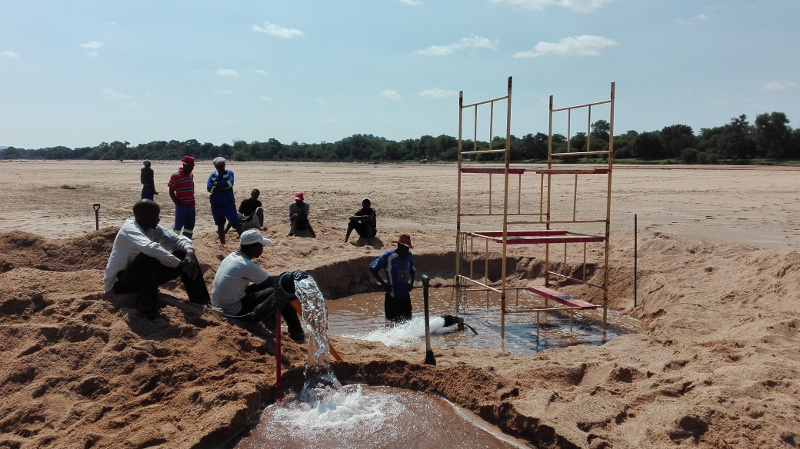
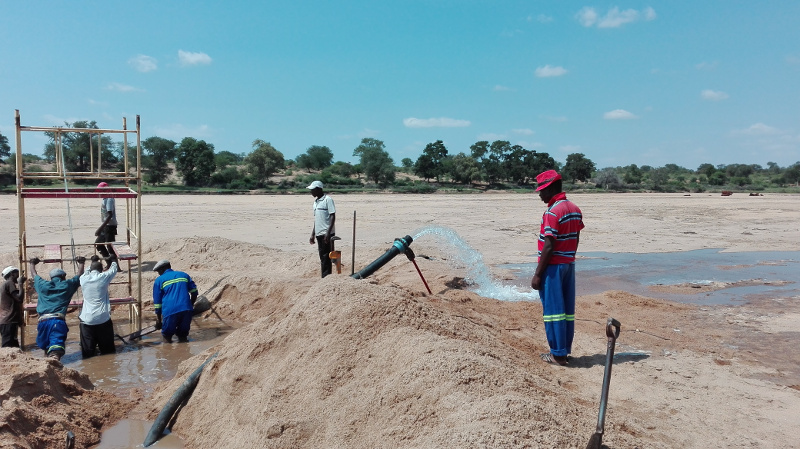
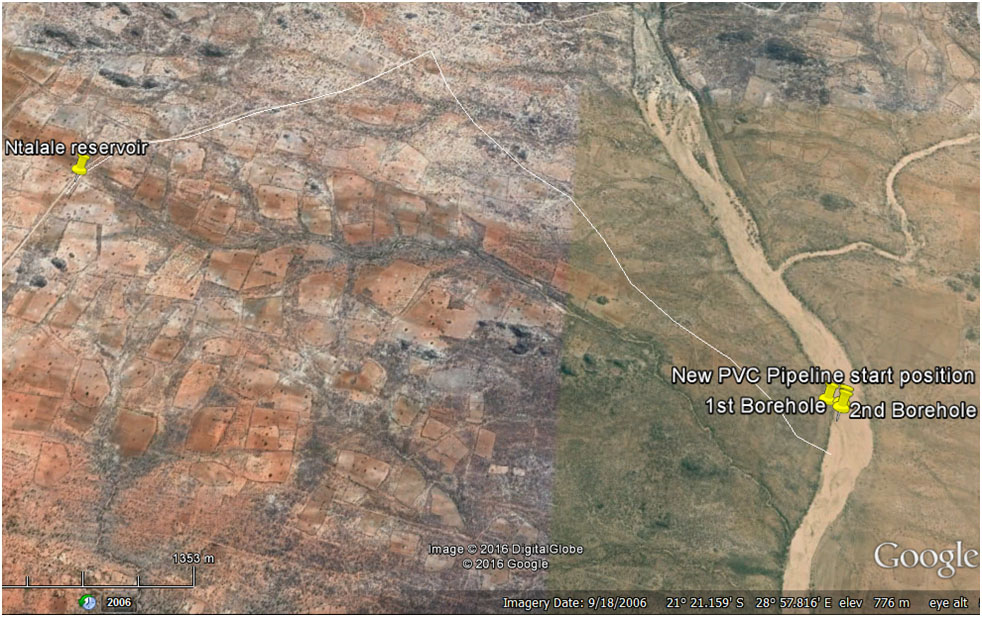
Caritas – Siamuloba Solar Powered Piped Water Scheme
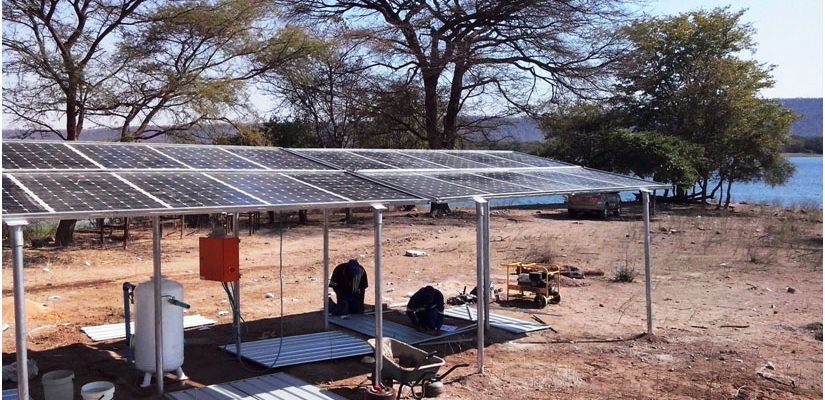
This project involved solar pumping water drawn from Kariba Dam in Sebungwe River Mouth Binga District for drinking water. Water was pumped from the dam by submersible pumps and into a filtration system that included sand filters and a solar powered UV treatment unit to clean the water and kill any bacteria. The water was then pumped 4 500m away to an elevated 50m3 tank on the top of a hill. From here water gravitated to the primary school where there is a tap located every 500 meters. This gave over 500 people access to clean safe drinking water. Everyday a total of 30 000litres is pumped into the system with the pumping head being 45 meters.
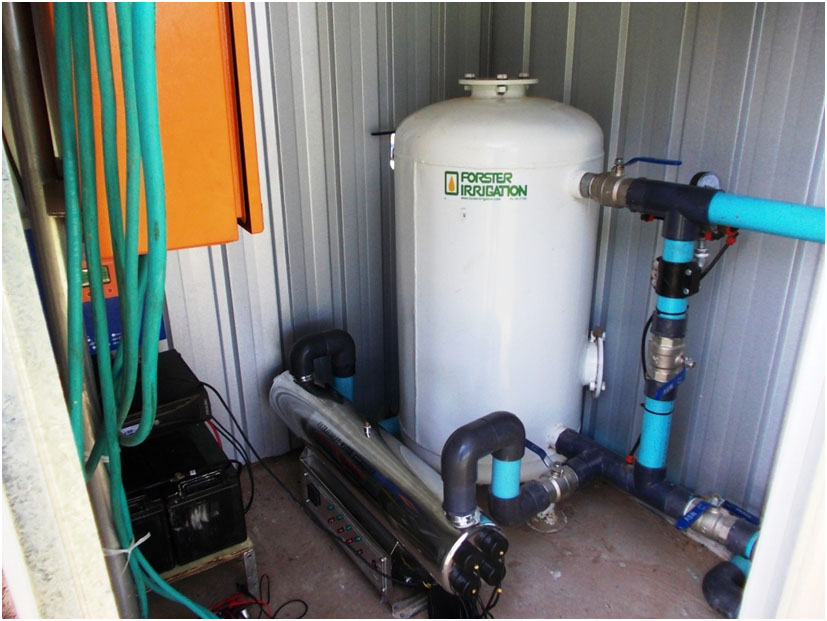
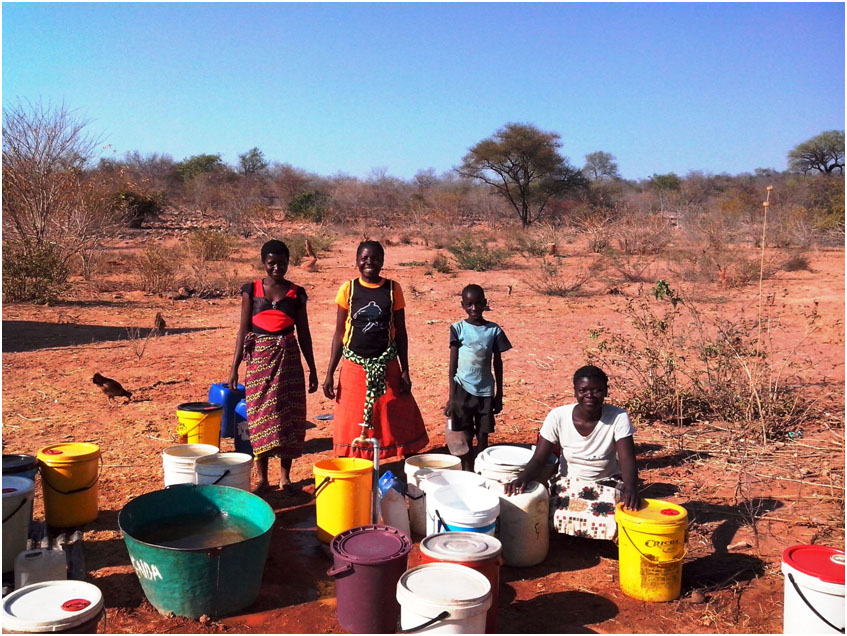
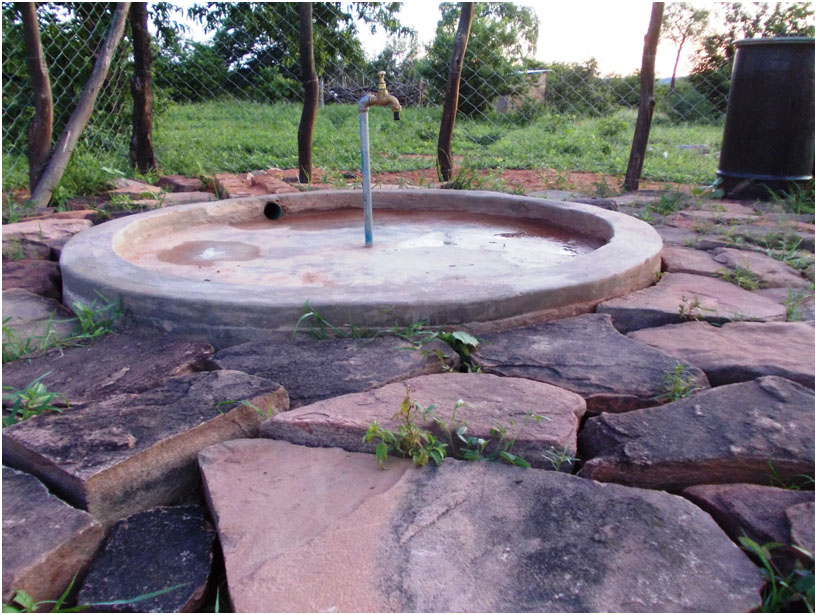
Dabane Trust – Manjolo Solar Powered Piped Water Scheme
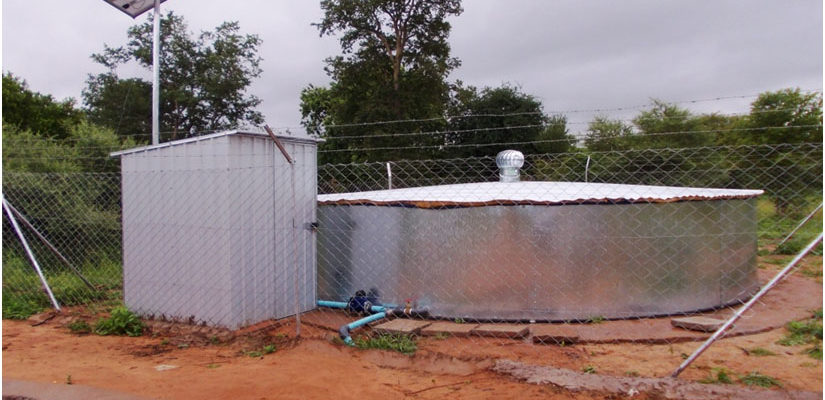
This project was similar to the one mentioned above but involved a 7km pipeline pumping a total head of 103 meters. There was a series of taps installed close to the reservoir as the land was too flat to gravitate water to other villages.
Contact Person: Stephen Hussey – Dabane Country Director – s.w.hussey@dabane.org
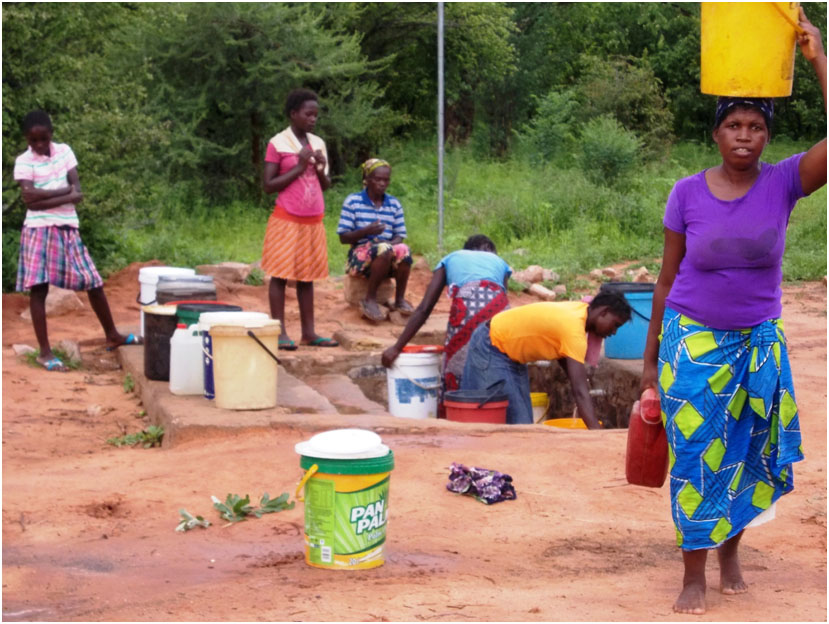
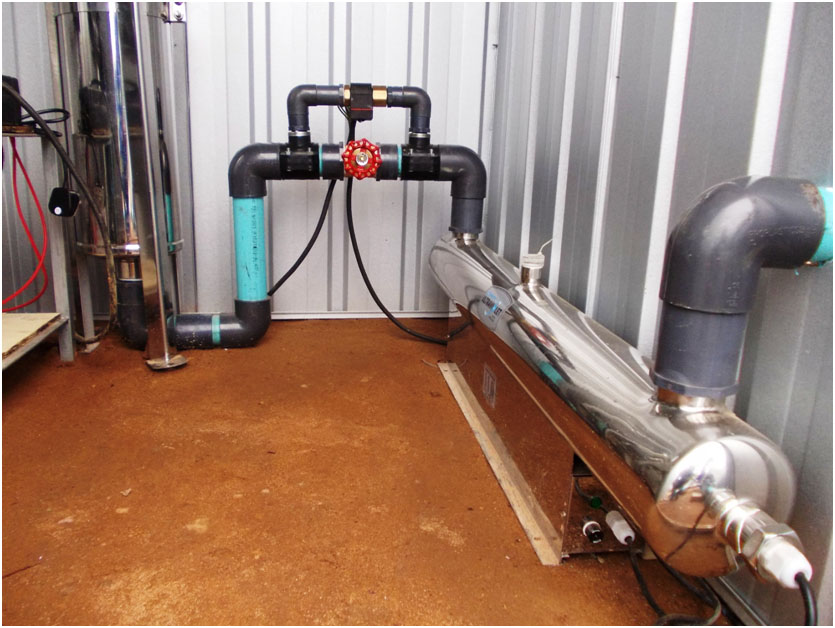
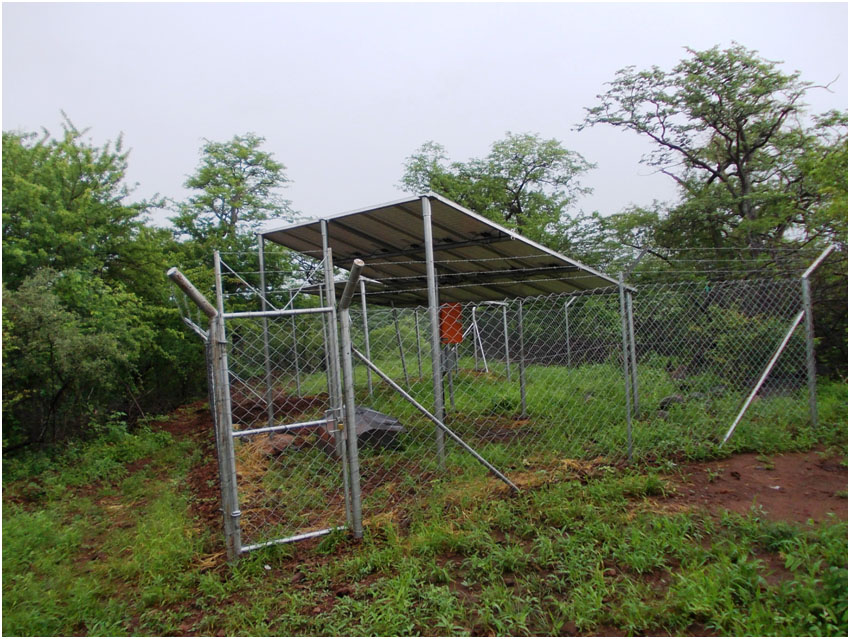
Ngezi Mine Turf Village Sewerage Ponds
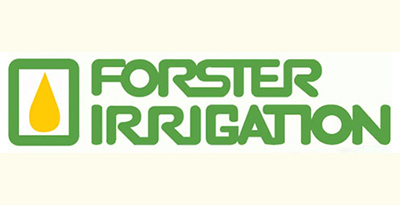
Forster Irrigation was contracted to put in an irrigation system to disperse the treated “grey” water at the end of the sewer ponds. This involved installing submersible well pumps to pump from the discharge sump into a reticulation network that surrounds the ponds. The pipe network has a main line and 4 isolated sub-mains that have sprinklers every 12 meters. The 200+ sprinklers disperse water around the outsides of the ponds to promote vegetative growth that prevents erosion on the ponds embankments.
Tobacco Processors
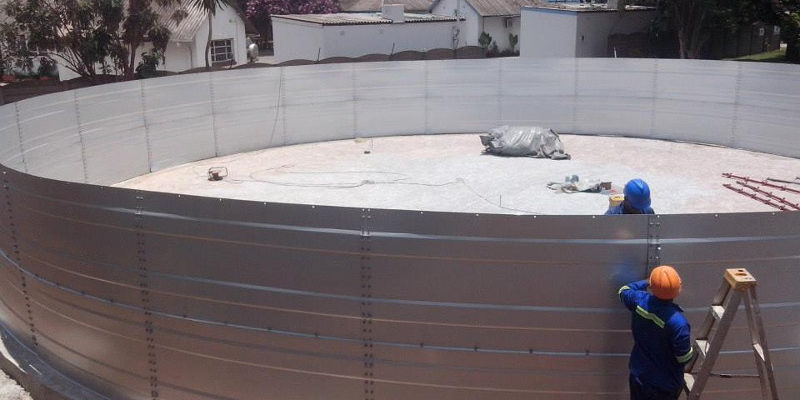
Forster Irrigation was contracted to do a full “Fire Prevention” reticulation project. This involved routing all the boreholes and municipal supply lines into a 1500m3 reservoir. From there we set up both a domestic supply system using pressure regulating pumps and a pipe network back into the plant and a fire sprinkler system using specially made fire pumps with low pressure activation, 8” steel supply lines to the main fire mains and head controls as well as general maintenance of the existing fire sprinkler system in partnership with a local Fire sprinkler company. This system was tested and received full Fire Prevention & Inspection Board approval.
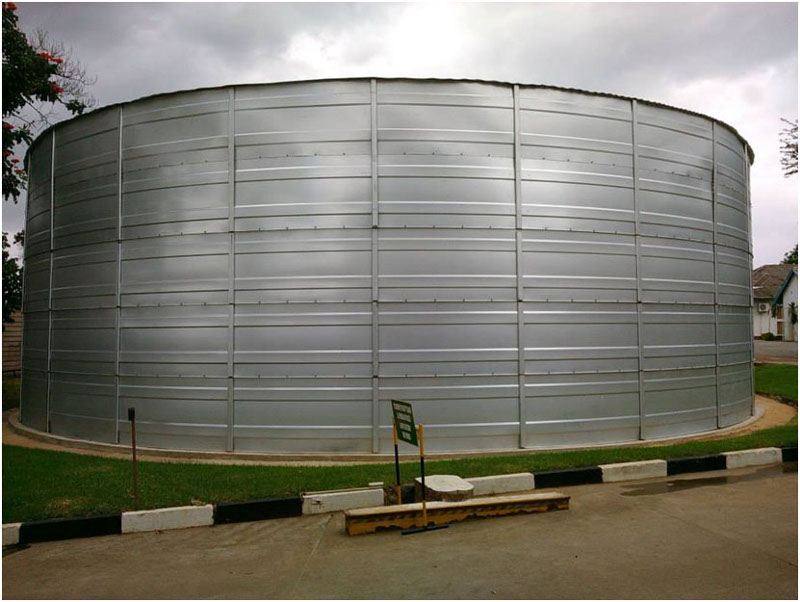
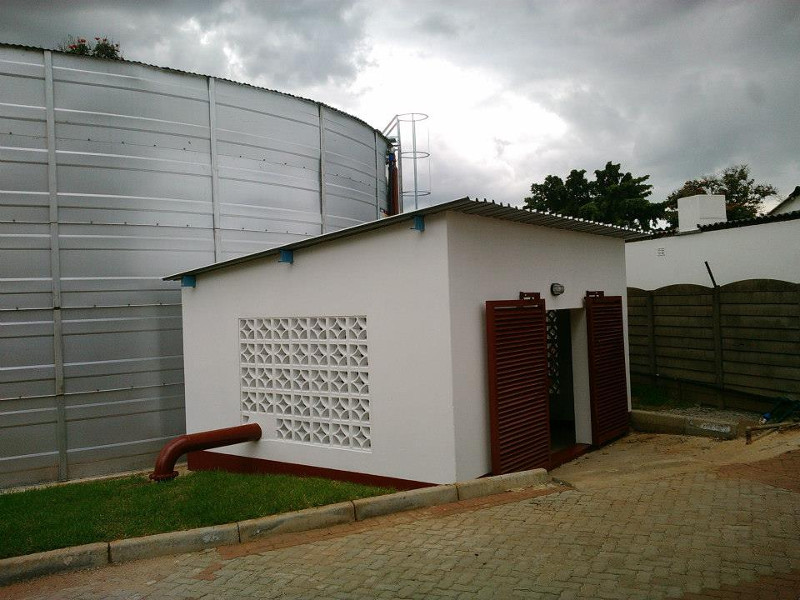
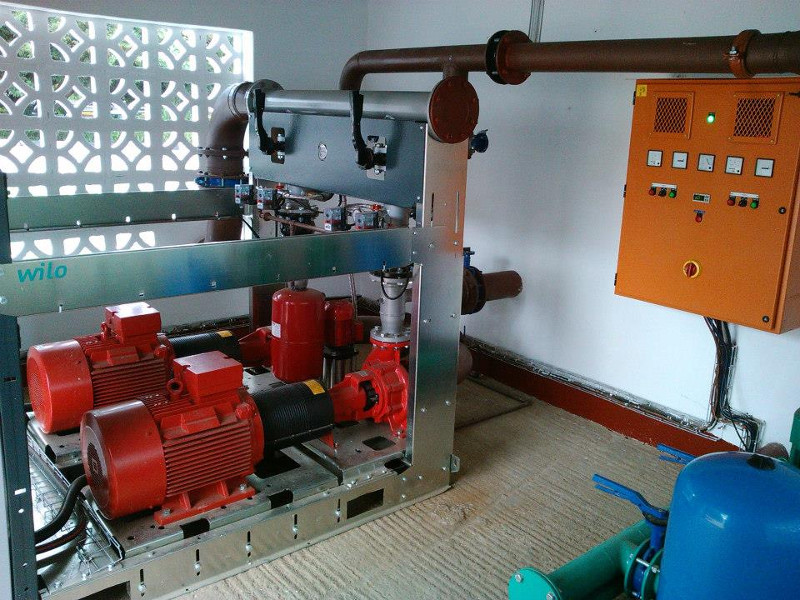
Chibuku Super Breweries
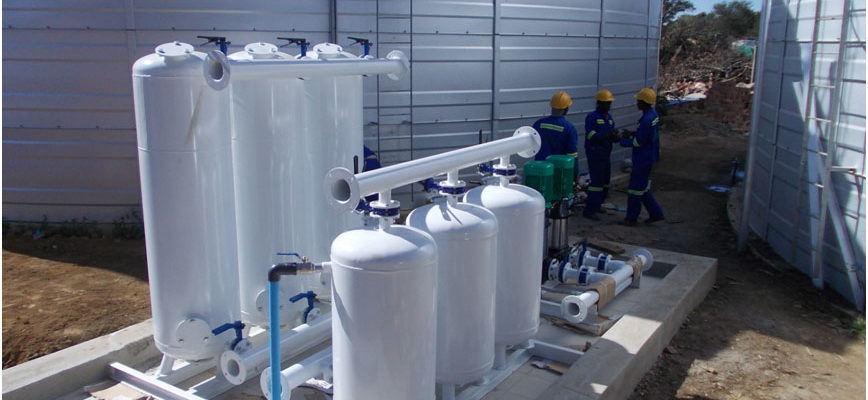
Forster Irrigation has been made the preferential supplier of Water Reservoirs for Chibuku Super Breweries. To date we have installed 6 tanks at 5 different locations. Namely:
- 1 x 1500m3 reservoir in Chitungwisa along with 2 x 30kW pumps and a piping reticulation system into the brewery.
- 1 x 1000m3 reservoir in Southerton Harare with 2 x 11kW pumps and a reticulation system linking existing boreholes into the tank and then from pumps into the brewery
- 2 x 1500m3 reservoirs in Bulawayo with 2 x 11kW pumps a reticulation system linking existing boreholes into the tank, a filtration and finishing plant to get water to SAB Brewery specs and a reticulation system into the brewery as well as building a Pump house.
- 1 x 1500m3 reservoir, pumping unit and water treatment for both Masvingo & Kwekwe.
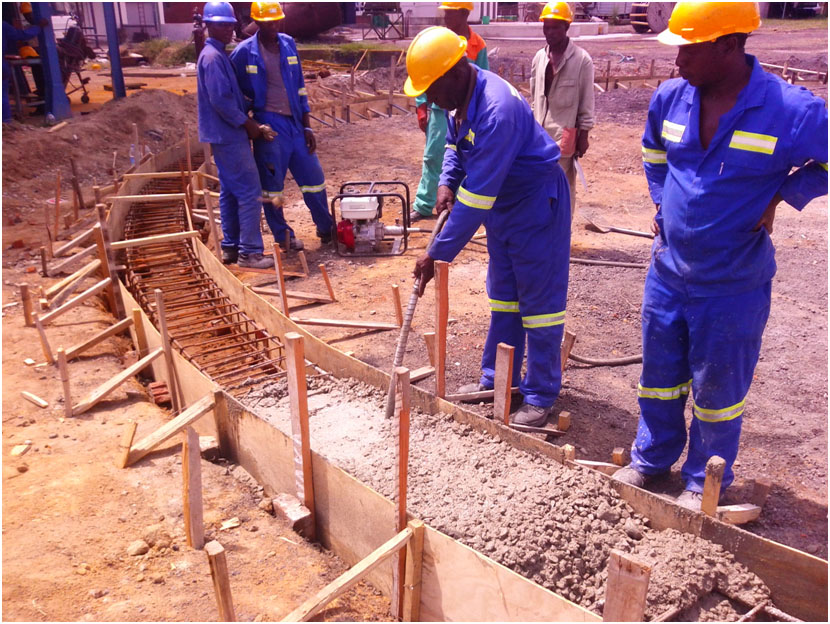
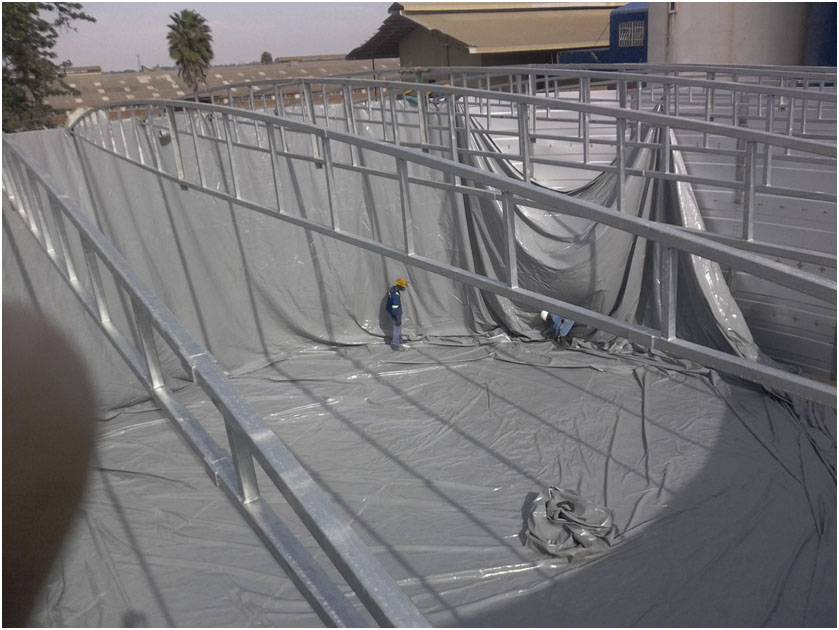
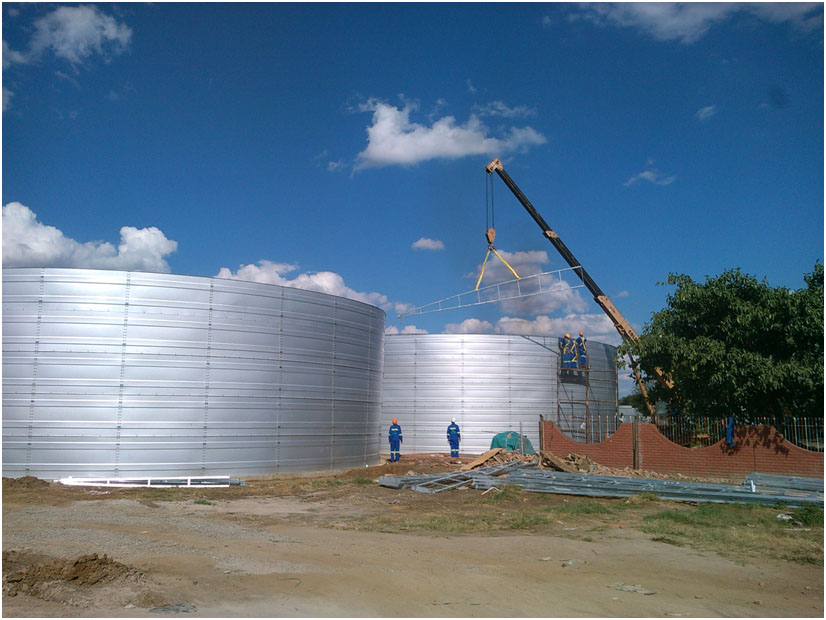
World Vision Lilombe Solar Powered Irrigation Scheme
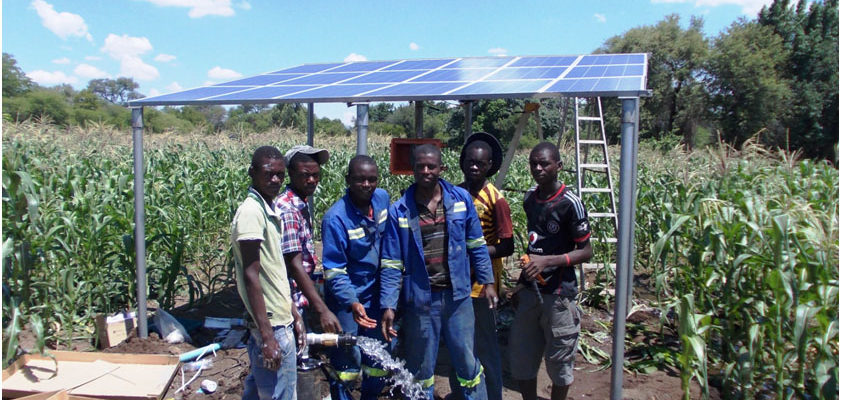
Forster Irrigation was contracted to install the largest solar powered irrigation scheme in Matabeleland at the time. Three boreholes were equipped feeding into an elevated tank on a nearby hill. From there water gravitated into the drip irrigated field. The scheme has since been expanded with new boreholes drilled and equipped to allow for more water to be pumped daily.
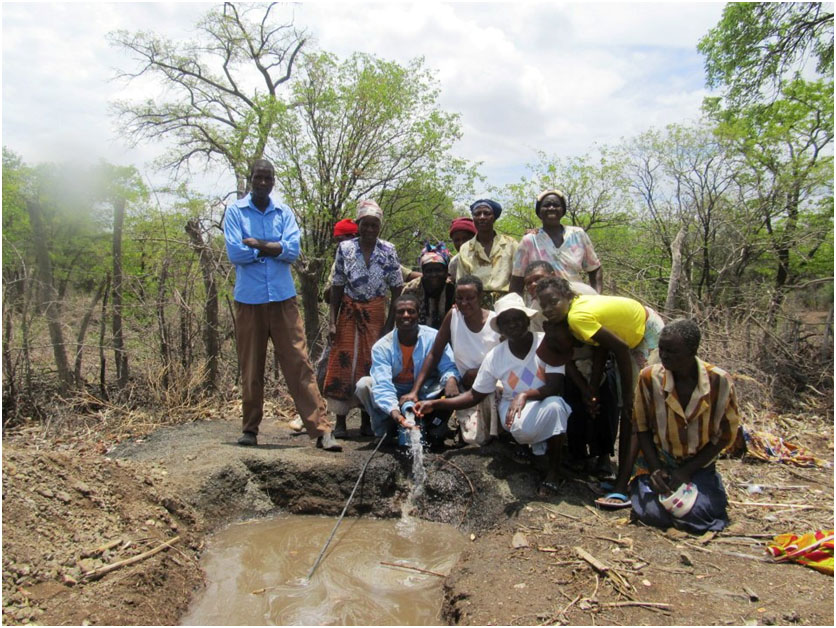
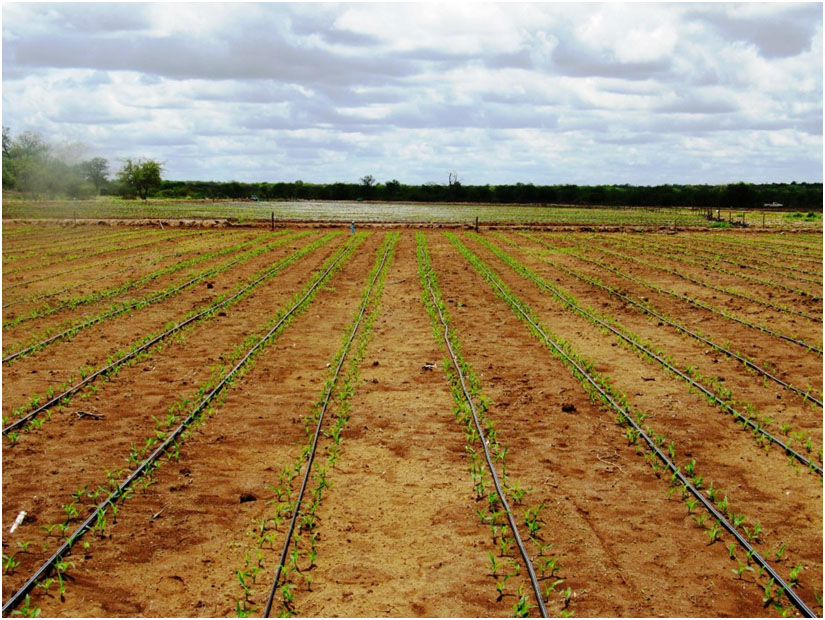
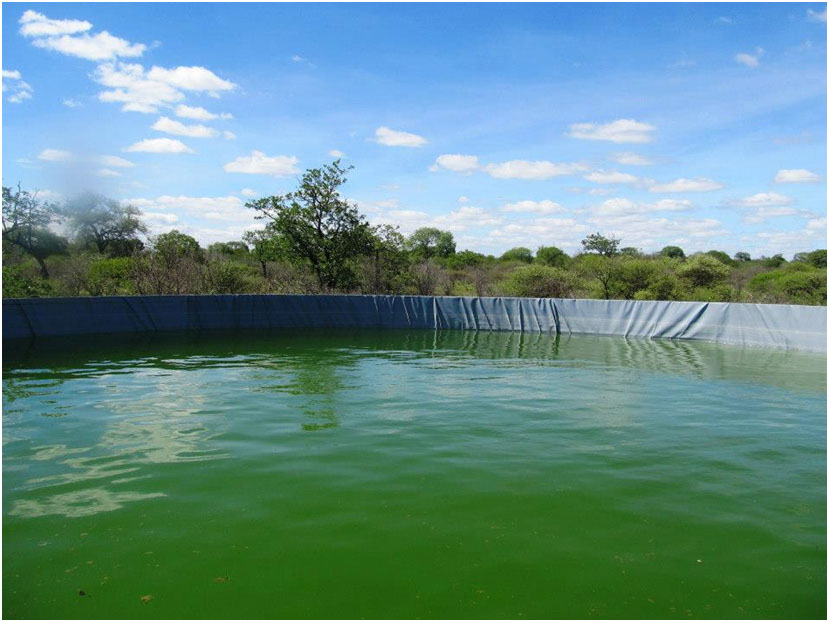
World Vision Honde Valley Small-Scale Coffee Irrigation
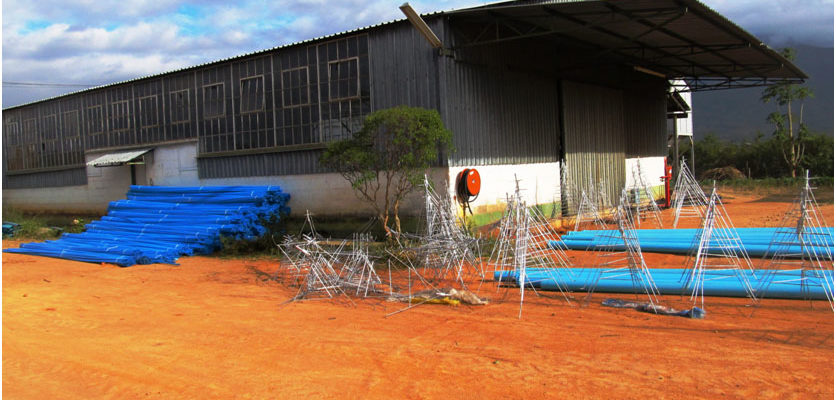
Forster Irrigation was contracted on a supply only basis to provide materials for a gravity-fed drag hose sprinkler system in the Honde Valley surrounding Hauna in Mutasa District. Water is harvested from dams located in the hills and pipes carry the water downstream under enough gravitational pressure so that sprinklers can be used which are connected to a drag hose and a tap. After supplying a smaller first phase of this project in 2011, Forster Irrigation was given the main contract in 2012 and managed to deliver correctly and in the specified time.
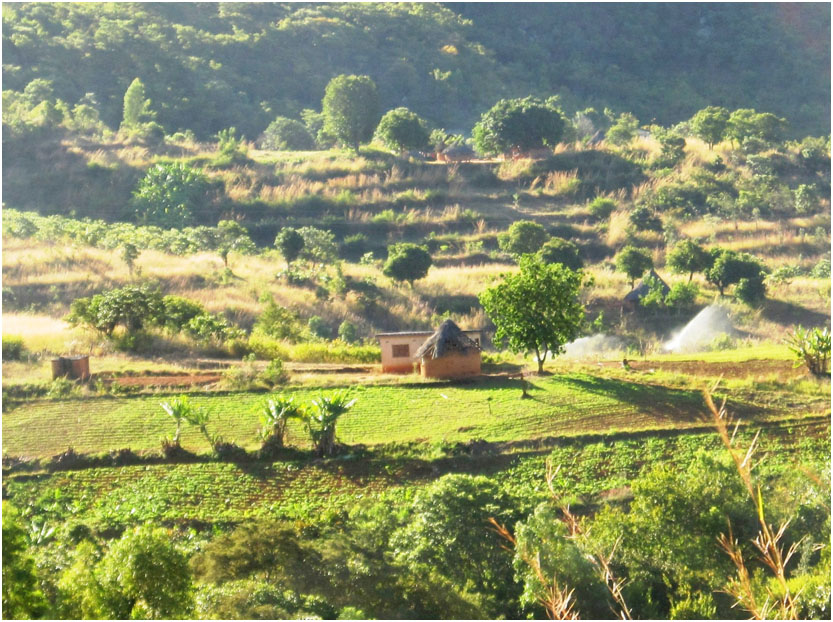
Bokai Platinum Mine – Sodflex Investments 2012
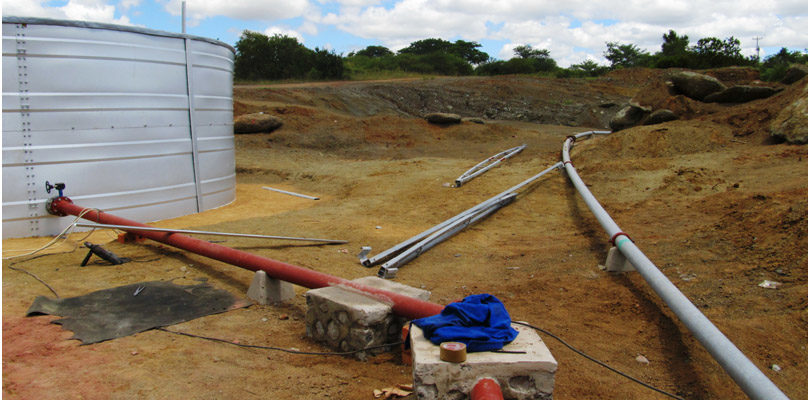
This project was for a platinum mine in Shurugwi. Water is pumped from a dam through a filtration and dosing system into a small 100m3 holding reservoir. From here large booster pumps pump water through 4” steel pipes 6km away. The pipeline discharges into a 400m3 reservoir on an elevated hill which then gravitates water into the mining village.
From the mining village, we then connected sewer pipes to feed into an underground concrete sump where the sewerage is pumped 4km to 3 sewer ponds to be treated. At the end of the ponds is another pump and filtration unit which kills bacteria from the treated water at the end of the ponds and pumps it into the mining shaft for use in dust suppression.
The project was completed within the specified time span and budget.
